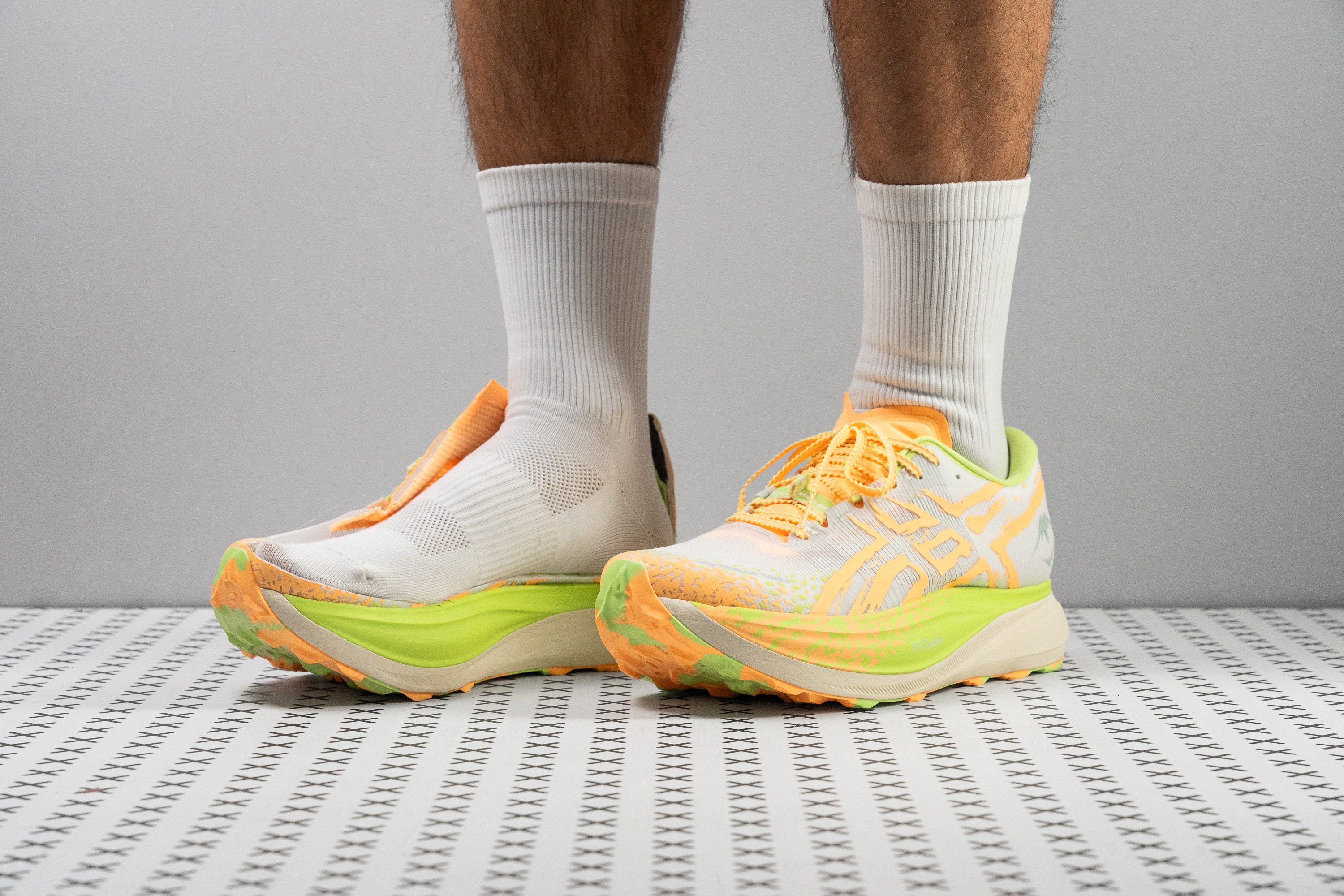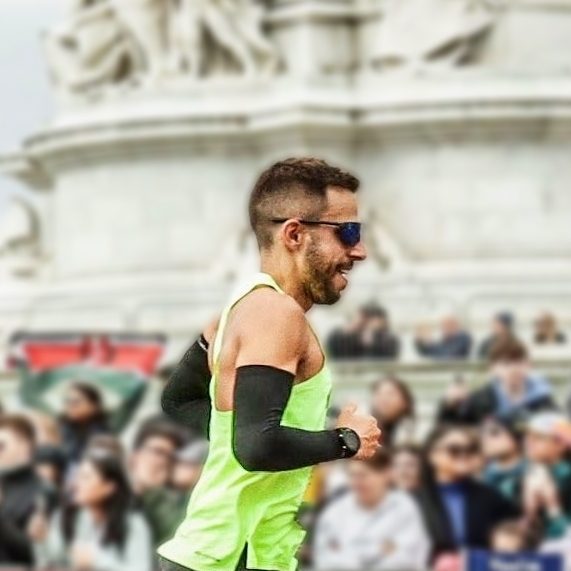Nuestra conclusión
Pros
- Absorción de impactos muy alta
- Suela ASICSGRIP maravillosa
- Estructura de alta calidad
- Ideales para pies estrechos
- Ligeras para ser unas zapatillas de trail
- Rocker en el antepié que mejora las transiciones
- Ideales para ultras fáciles y relativamente llanos
- Upper fantástico con una transpirabilidad excelente
- Suela tan alta que rompe récords
Contras
- La espuma FF Blast+ limita el retorno de energía
- Caras
- Estabilidad mínima
- Upper delicado y propenso a desgarrarse
Veredicto de los usuarios
- Top 15% entre zapatillas de trail running
- Top 19% entre zapatillas de running neutras
Comparativa
Las zapatillas de running más parecidas
+ + Añadir unas zapatillas | |||||
|---|---|---|---|---|---|
| Puntuación global | 90 Excelentes | 90 Excelentes | 86 Buenas | 89 Notables | |
| Precio | 250 € | 220 € | 225 € | 250 € | |
| Terreno de trail | Sencillo | SencilloModerado | SencilloModerado | SencilloModerado | |
| Arch support | Neutral | Neutral | Neutral | Neutral | |
| Peso laboratorio Peso marca | 9.1 oz / 258g 9.2 oz / 261g | 8.7 oz / 248g 8.8 oz / 249g | 11.8 oz / 335g 12.1 oz / 343g | 10.5 oz / 299g 10.1 oz / 286g | |
| Lightweight | ✗ | ✓ | ✗ | ✗ | |
| Drop laboratorio Drop marca | 10.3 mm 5.0 mm | 13.0 mm 10.0 mm | 10.6 mm 8.0 mm | 11.8 mm 8.5 mm | |
| Técnica de carrera | Talón | Talón | Talón | Talón | |
| Talla | Tallan bien | Media talla más pequeñas | - | Tallan bien | |
| Rigidez de la mediasuela | Blanda | Blanda | Equilibrada | Blanda | |
| Diferencia de la rigidez de la mediasuela en frío | Normal | Normal | Pequeña | Pequeña | |
| Placa | Placa de carbono | Placa de carbono | Placa de carbono | Placa de carbono | |
| Durabilidad de la parte delantera | Muy mala | Decente | Mala | Muy mala | |
| Durabilidad del acolchado del talón | Alta | Media | Alta | Alta | |
| Durabilidad de la suela exterior | Decente | Buena | Buena | Buena | |
| Transpirabilidad | Alta | Media | Media | Media | |
| Anchura / ajuste | Media | Media | Ancha | Media | |
| Anchura de la parte delantera | Estrecha | Media | Media | Ancha | |
| Flexibilidad | Rígida | Rígida | Rígida | Rígida | |
| Rigidez torsional | Rígidas | Rígidas | Rígidas | Rígidas | |
| Rigidez del contrafuerte del talón | Moderado | Moderado | Rígido | Moderado | |
| Profundidad del dibujo de la suela | 2.7 mm | 2.9 mm | 3.0 mm | 3.0 mm | |
| Altura de la suela en la zona del talón laboratorio Altura de la suela en la zona del talón marca | 44.7 mm 44.0 mm | 34.7 mm 36.5 mm | 47.3 mm 49.0 mm | 36.6 mm 38.0 mm | |
| Antepié laboratorio Antepié marca | 34.4 mm 39.0 mm | 21.7 mm 26.5 mm | 36.7 mm 41.0 mm | 24.8 mm 29.5 mm | |
| Anchuras disponibles | EstándarAncho | Estándar | Estándar | Estándar | |
| Heavy | ✗ | ✗ | ✓ | ✗ | |
| Estación | VeranoTodas las estaciones | Todas las estaciones | Todas las estaciones | Todas las estaciones | |
| Removable insole | ✓ | ✓ | ✓ | ✓ | |
| Orthotic friendly | ✓ | ✓ | ✓ | ✓ | |
| Clasificación | #64 Top 18% | #68 Top 19% | #185 49% inferior | #88 Top 24% | |
| Popularidad | #301 18% inferior | #320 13% inferior | #193 47% inferior | #202 45% inferior |
Who should buy
We tested the Metafuji Trail both in our lab and on trails, just to find that:
- It’s ideal for runners who loved the Metaspeed Sky+, as this model’s design began in 2022 using that shoe as its foundation, but adapted for trail running. Yeah, it definitely took some time to finally reach the market...
- Works exceptionally well for neutral runners tackling trail races or ultras on moderate terrain.
- Feels to us like a perfect option for those seeking a fast trail shoe with a high heel-to-toe drop.
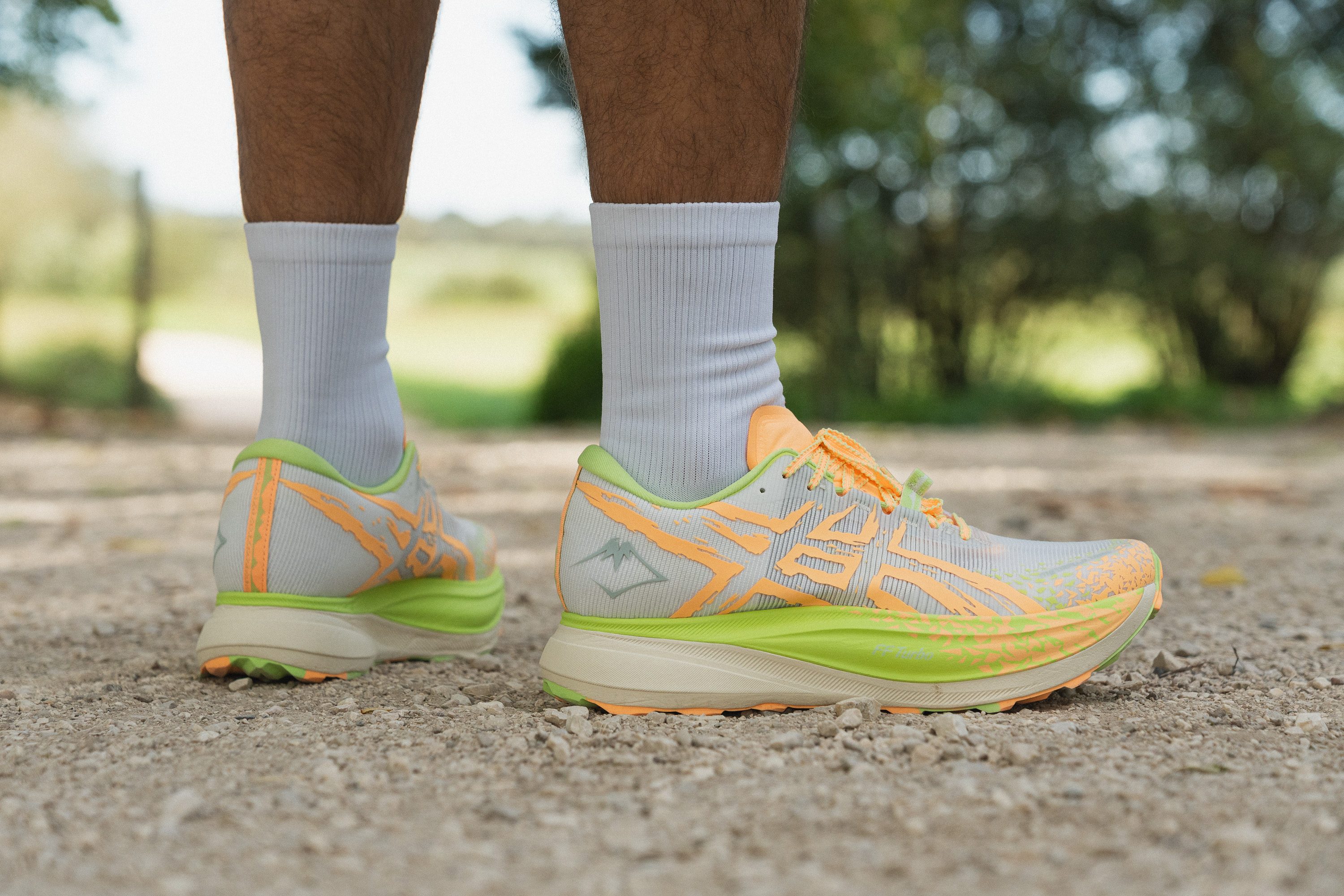
Who should NOT buy
We believe the Metafuji Trail doesn’t justify its high price considering its good-but-not-great energy return. The inclusion of FF Blast+ holds it back from true supershoe performance. Based on our lab tests, we recommend the HOKA Tecton X 3 and Adidas Terrex Agravic Speed Ultra, both featuring full superfoam midsoles.
We also think the snug, race-tight fit can be problematic. In our tests, the toebox was restrictive in both width and height. For those seeking more toe splay room, we recommend the Nike Ultrafly, while the Kailas Fuga EX Pro fits better if toebox height is the main concern.
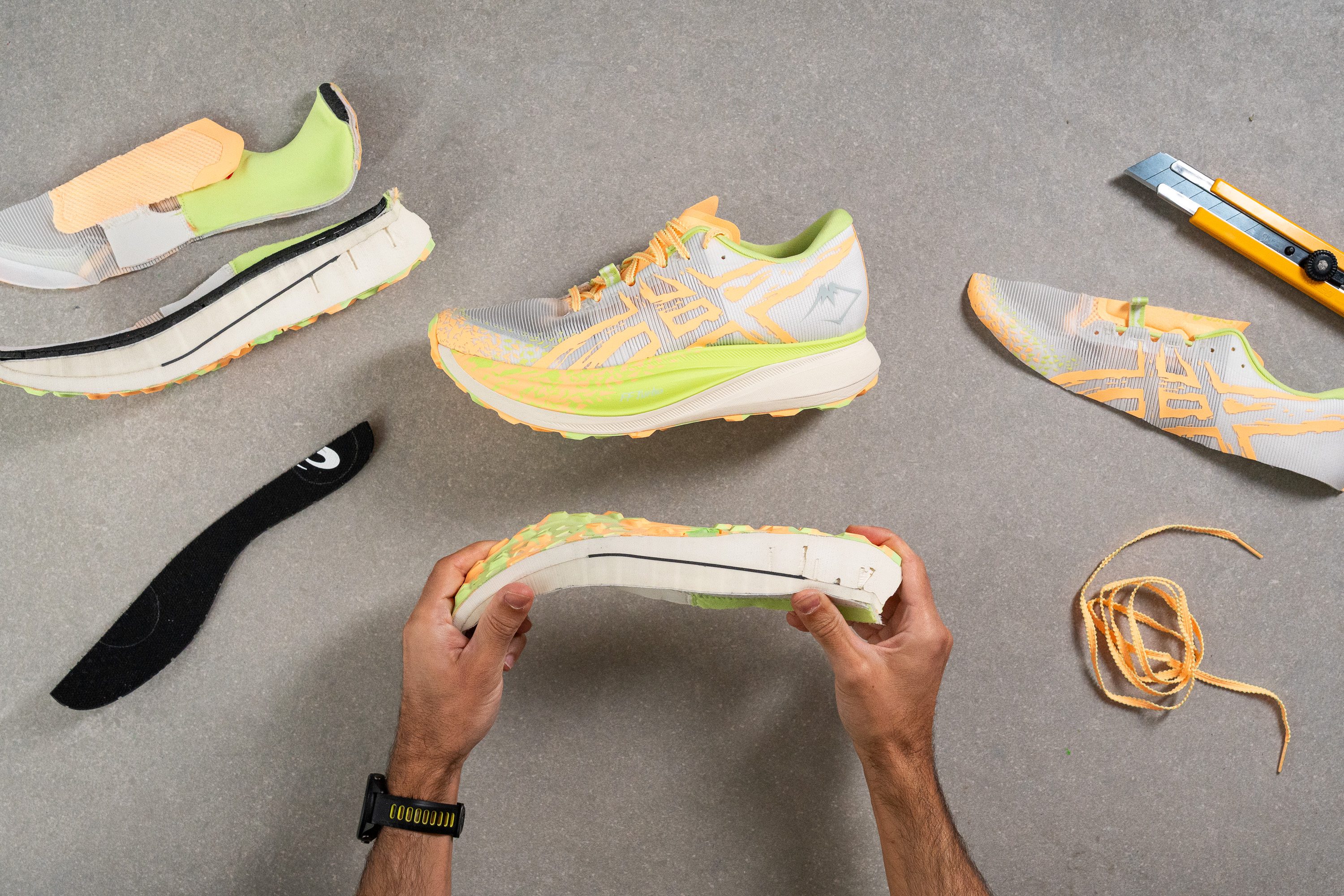
Amortiguación
Shock absorption
The Metafuji Trail instantly earns our top recommendation for ultra distances or heavier runners, as it delivers outstanding shock absorption from its super-sized, cushion-packed midsole.
With 153 SA in the heel and 122 SA in the forefoot, we discovered it leaves our lab average far behind, proving how remarkably impact-protective this midsole truly is.
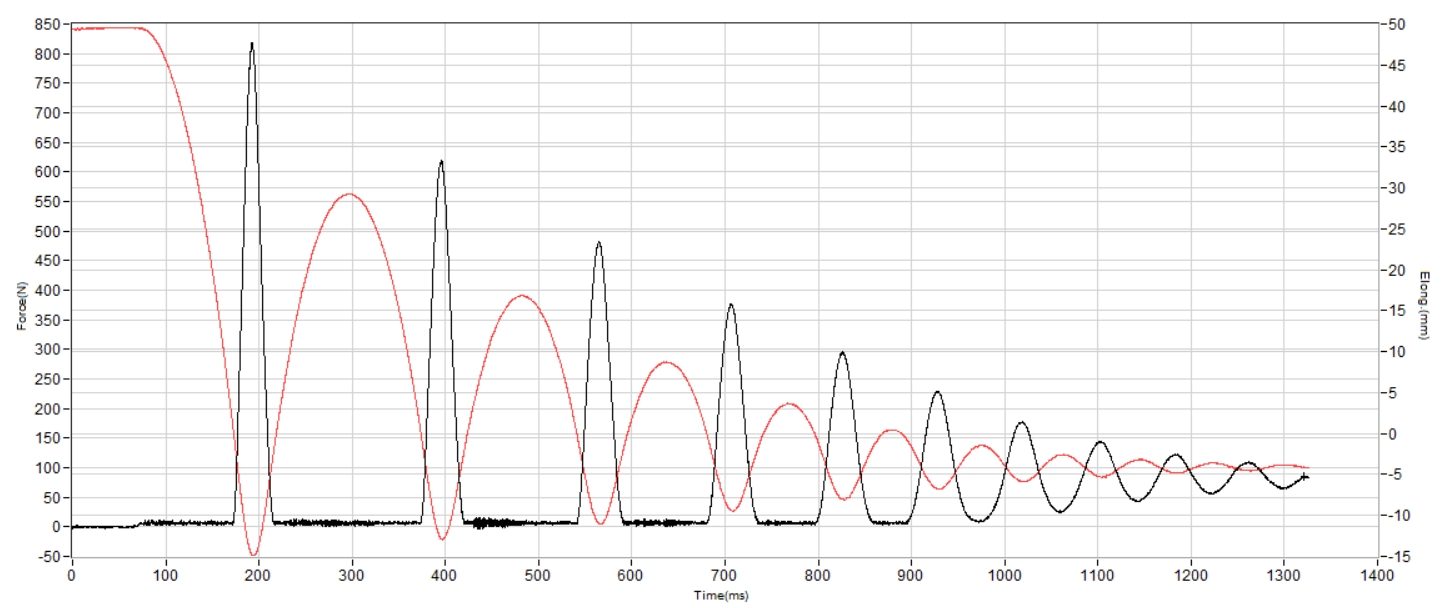
| Metafuji Trail | 153 SA |
| Media | 122 SA |
Energy return
The hype around this shoe was easy to spot in the trail running community, as the prototypes looked like a true Metaspeed made for the mountains.
However, the Metafuji Trail fell short of our expectations in terms of energy return. Its dual-foam midsole includes a large portion of FF Blast+, a foam known for its modest rebound. As a result, it delivered just 59.7% energy return in the heel and 65.4% in the forefoot. And these are respectable numbers, but not good enough for the sky-high price tag.
| Metafuji Trail | 59.7% |
| Media | 55.6% |
Altura de la suela en la zona del talón
This shoe definitely isn’t for runners who enjoy staying close to the ground on trails. With a towering 44.7 mm stack in the heel, it’s a true max-stack design, comparable in height to the ASICS Superblast 2—one of the tallest shoes ever made.
Because of this extreme build, its use case is highly specific, and those who are unsure should probably avoid taking the gamble.
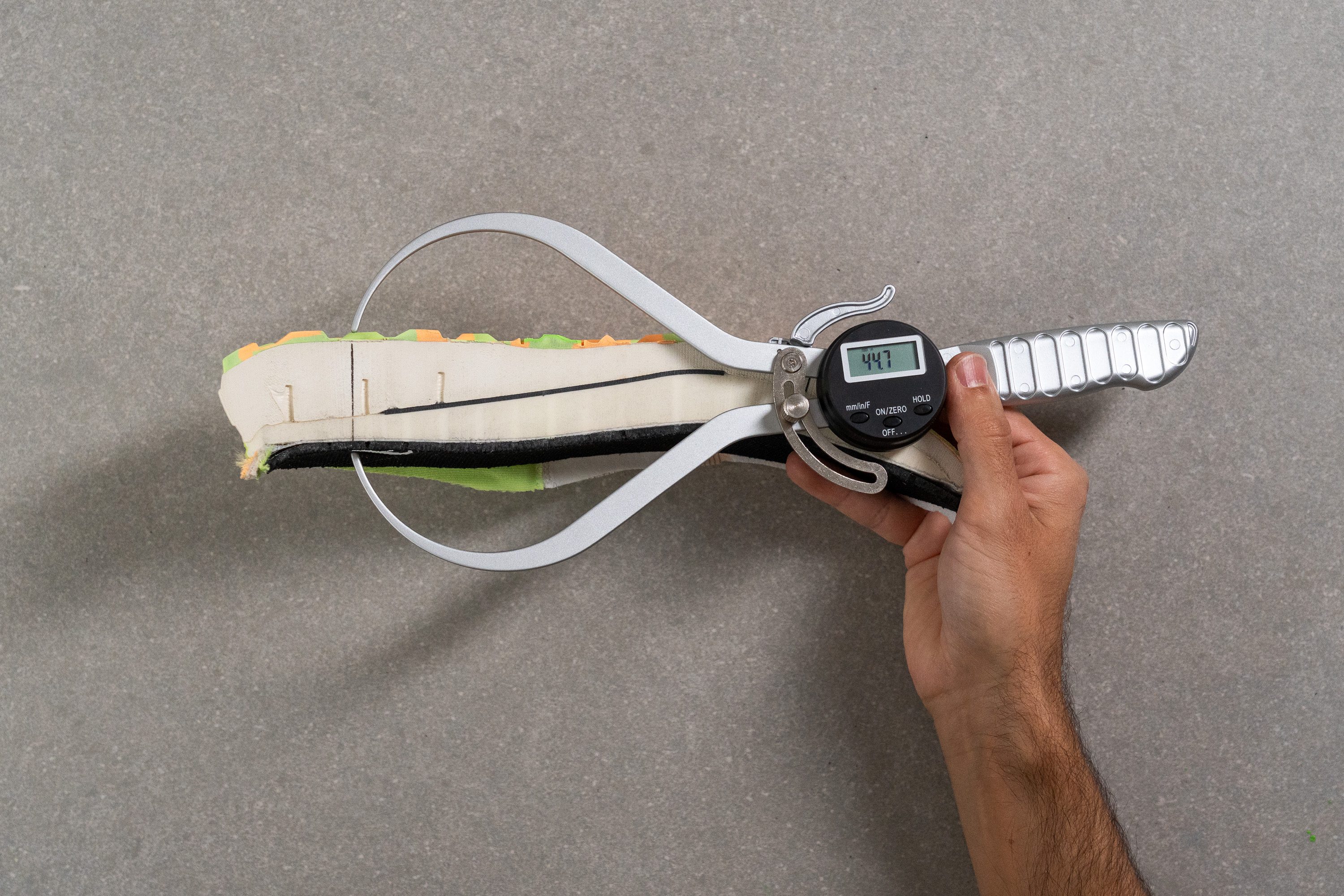
| Metafuji Trail | 44.7 mm |
| Media | 32.6 mm |
Altura de la suela en el antepié
The forefoot follows the exact same max-stack design. In fact, at the time of this lab review, it was the highest we had ever measured.
However, with the ongoing maximalist trend in running shoes, and knowing that trail models typically adopt road trends 1–2 years later... it’s only a matter of time before this benchmark is surpassed.
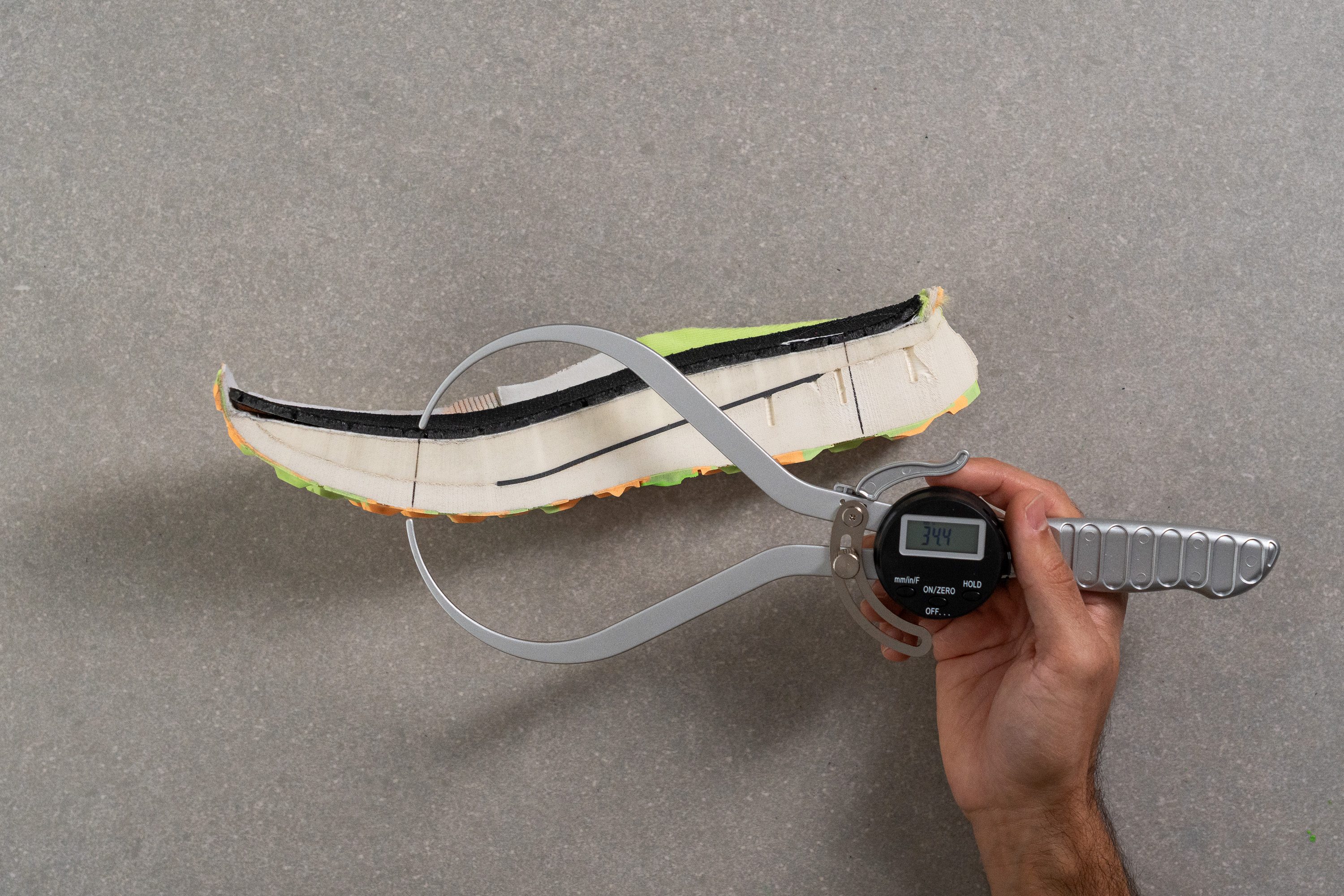
| Metafuji Trail | 34.4 mm |
| Media | 25.1 mm |
Drop
The difference between both measurements results in an uncommon 10.3 mm drop.
We call it uncommon because trail shoes typically range between 5 and 8 mm, making this setup ideal for runners who prefer a higher drop or a road-like feel.
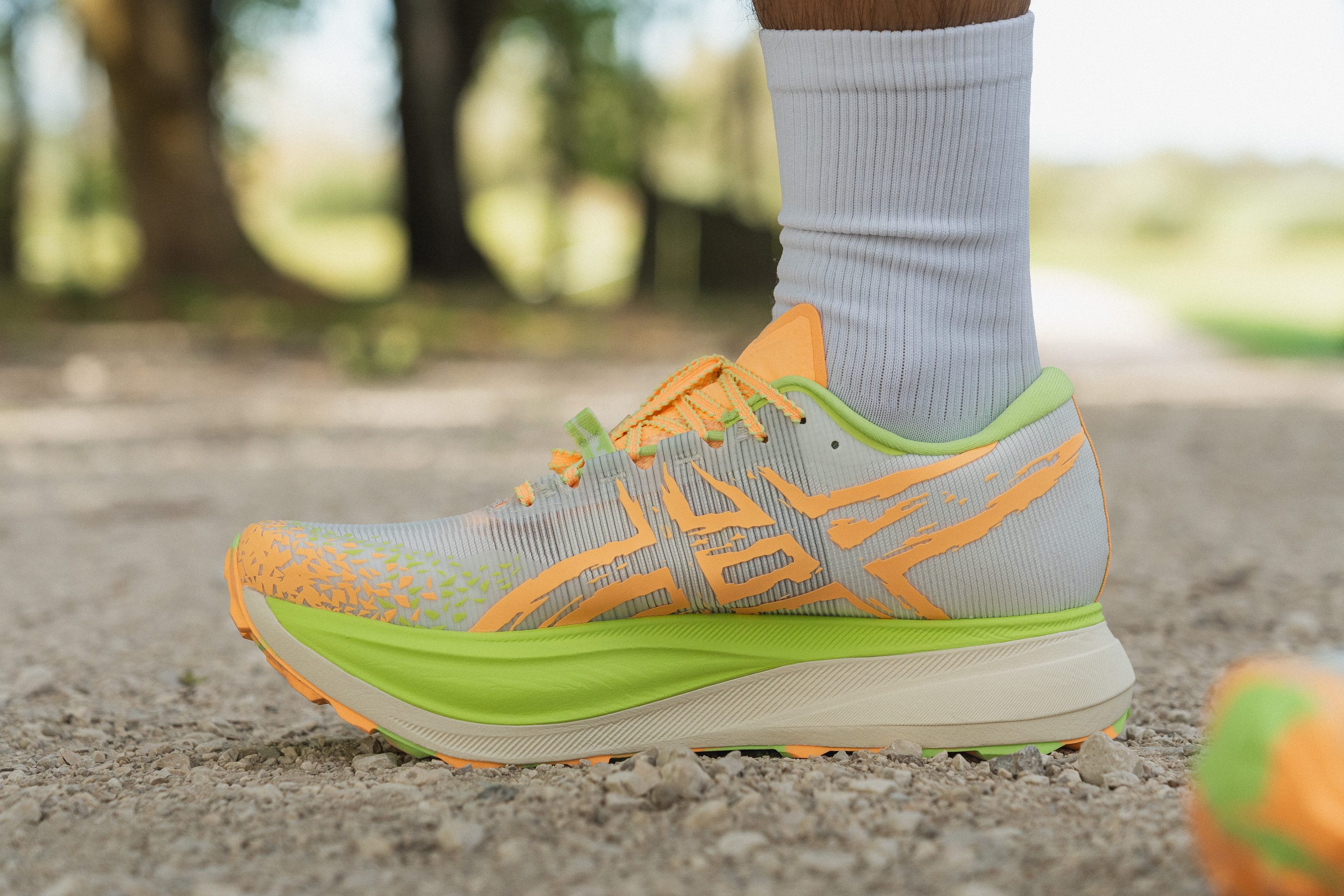
| Metafuji Trail | 10.3 mm |
| Media | 7.6 mm |
Suavidad de la mediasuela
The main layer of this midsole is a thick slab of FF Blast+ foam that we found plush at 14.0 HA. It's also durable and comfortable... but at the same time, it's far from fast-paced for a shoe meant to race.
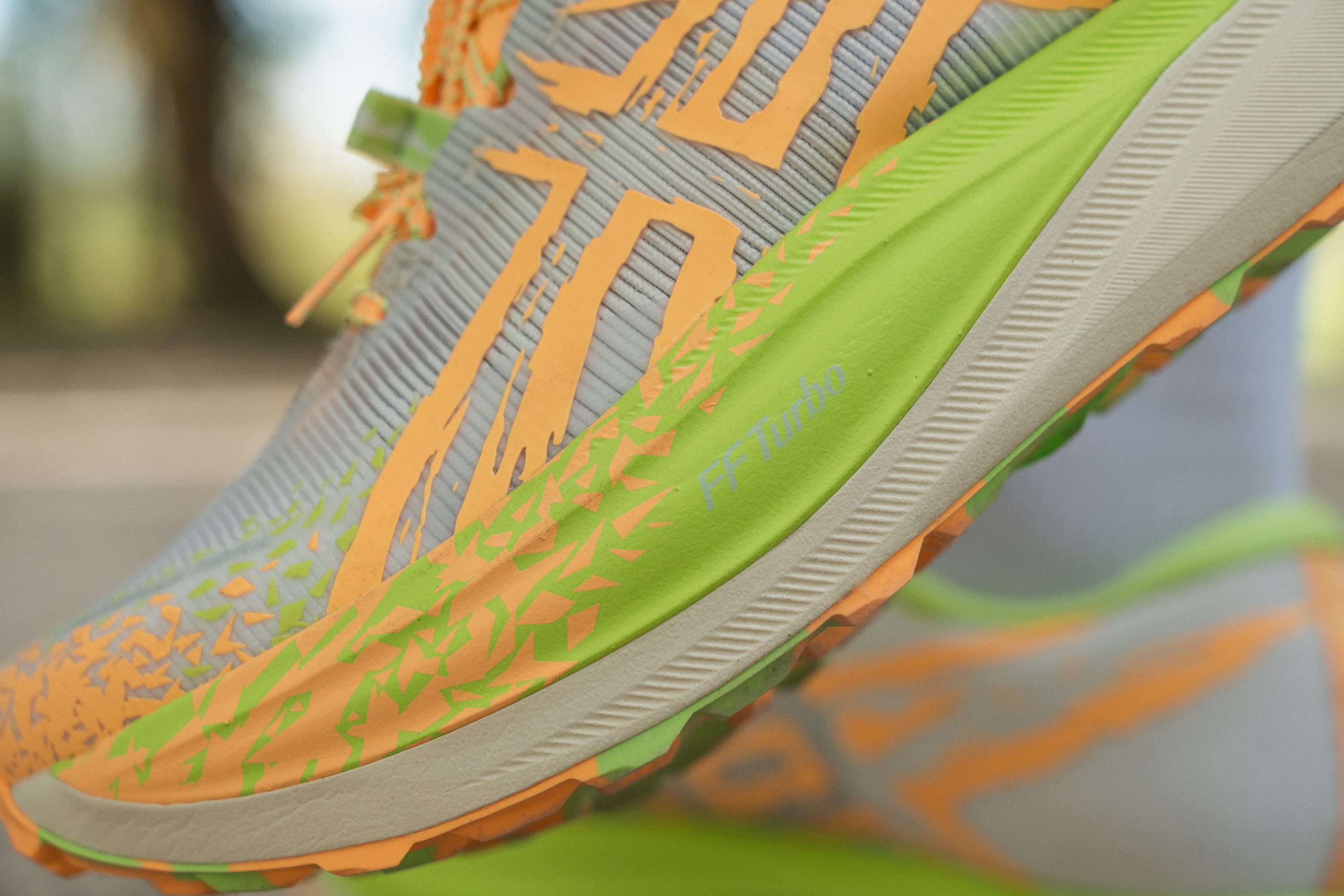
And it’s disappointing that ASICS once again did the same trick, printing FF Turbo on the side but forgetting about FF Blast+. Many runners will likely be misled, thinking that this midsole is 100% FF Turbo, just like what happened with the Magic Speed 4. Come on, ASICS...
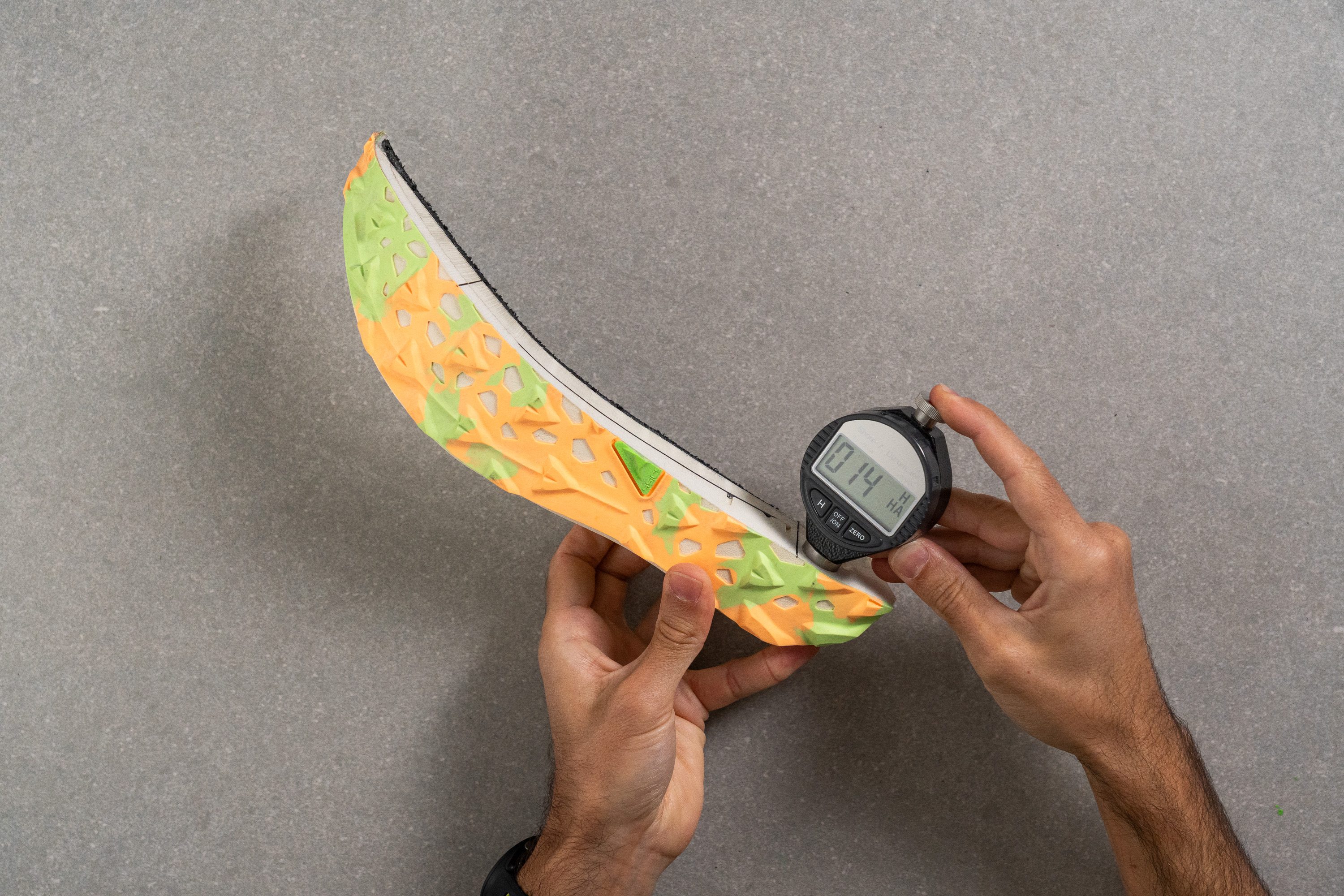
| Metafuji Trail | 14.0 HA |
| Media | 21.9 HA |
Suavidad de la espuma secundaria
The magic of this shoe comes from the FF Turbo layer that goes on top. This foam, which we analyzed in our detailed guide, is a PEBA-based compound that sits one step below ASICS’ top superfoams like FF Turbo+ or FF Leap, yet it’s more durable and stable. It's also firmer, as we tested it at 26.5 HA.
And why use FF Turbo instead of FF Turbo+ or FF Leap like in their newer supershoes? There’s actually a good reason.
This shoe’s development began back when the FF Turbo-based Metaspeed Sky+ was on sale. ASICS trail athlete Andreu Simón from Spain created an experimental trail version by resoling a Metaspeed Sky+, and it worked surprisingly well. ASICS then decided to move forward with the project (but slowly as you can see) and ultimately kept the same FF Turbo for the Metafuji Trail.
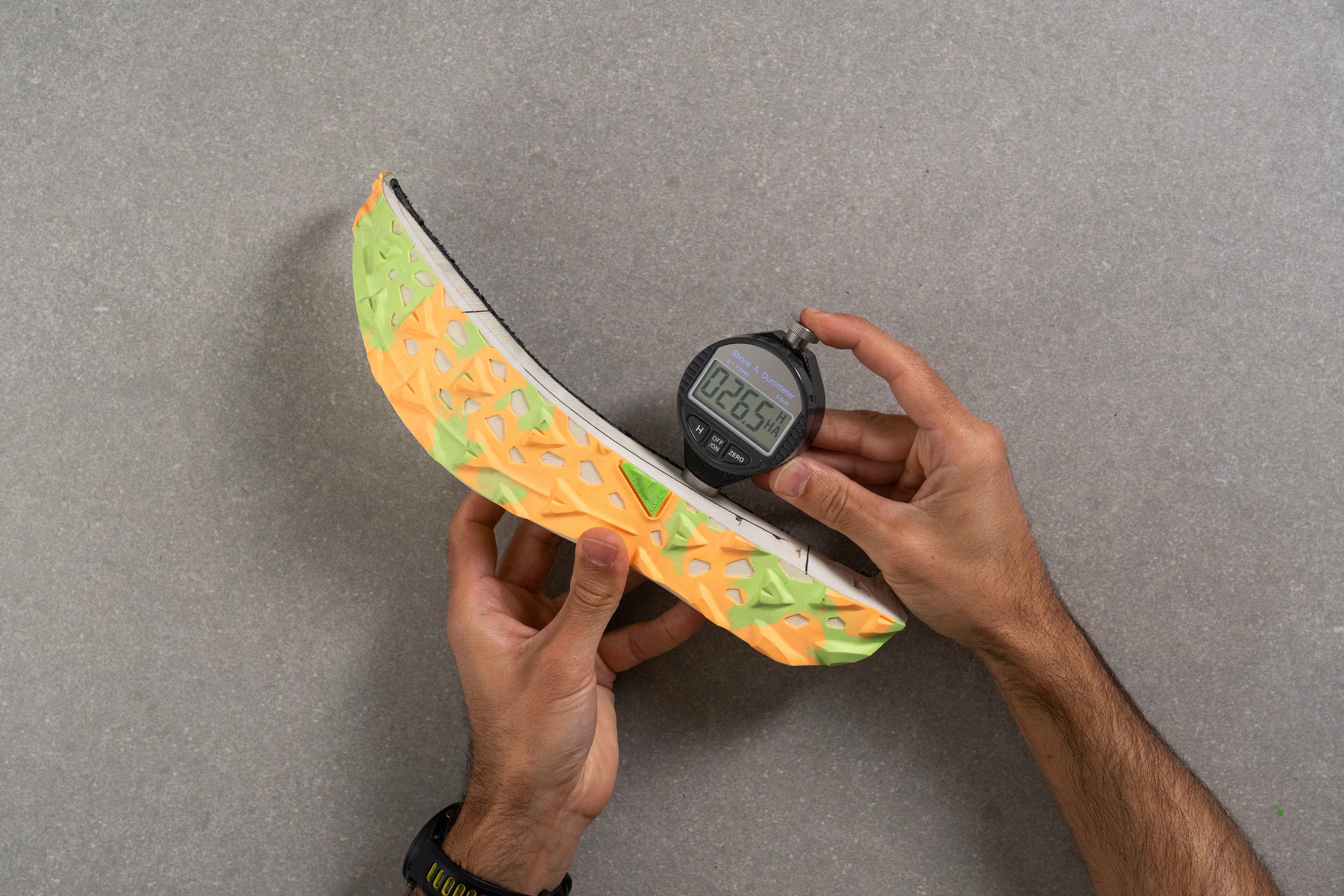
| Metafuji Trail | 26.5 HA |
| Media | 25.5 HA |
Rocker
The rocker design of the ASICS Metafuji Trail in this photo is clearly dual-natured. The forefoot features a super-pronounced upward curve, which helps offset the shoe’s towering stack height and allows smoother toe-offs despite the large foam volume.
In contrast, the heel geometry is much more traditional, almost flat at the rear before gradually curving up, something that looks to us really reminiscent of the Metaspeed Sky+.
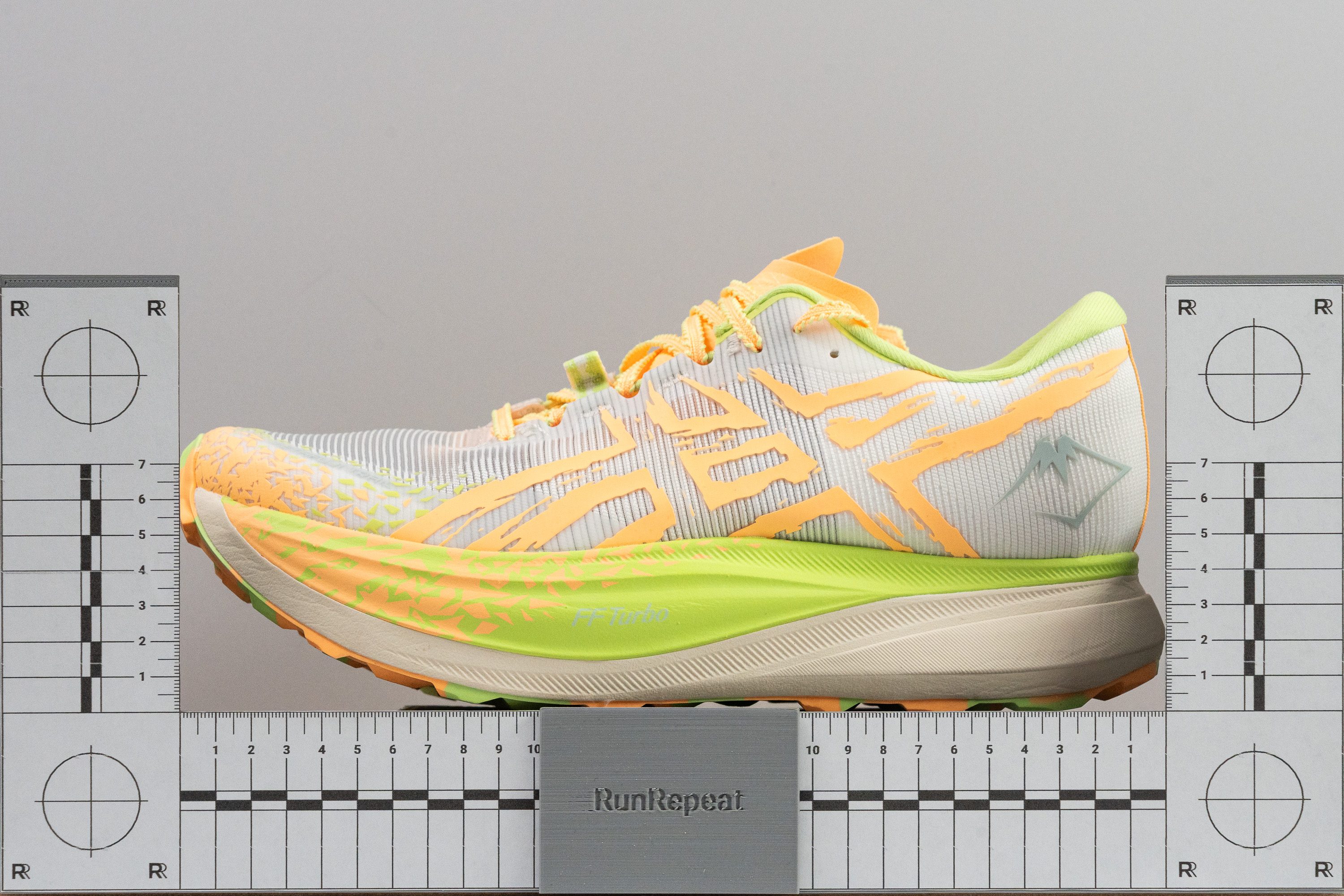
Placa
The ASICS Metafuji Trail features a full-length carbon plate, although our photo suggests it mainly covers the midfoot area. This is typical for trail models, as most brands use a forked design in the forefoot and heel to enhance flexibility.
The plate is clearly felt while running, making this shoe suitable only for those who don’t mind its distinctly stiff sensation from the rigid material.
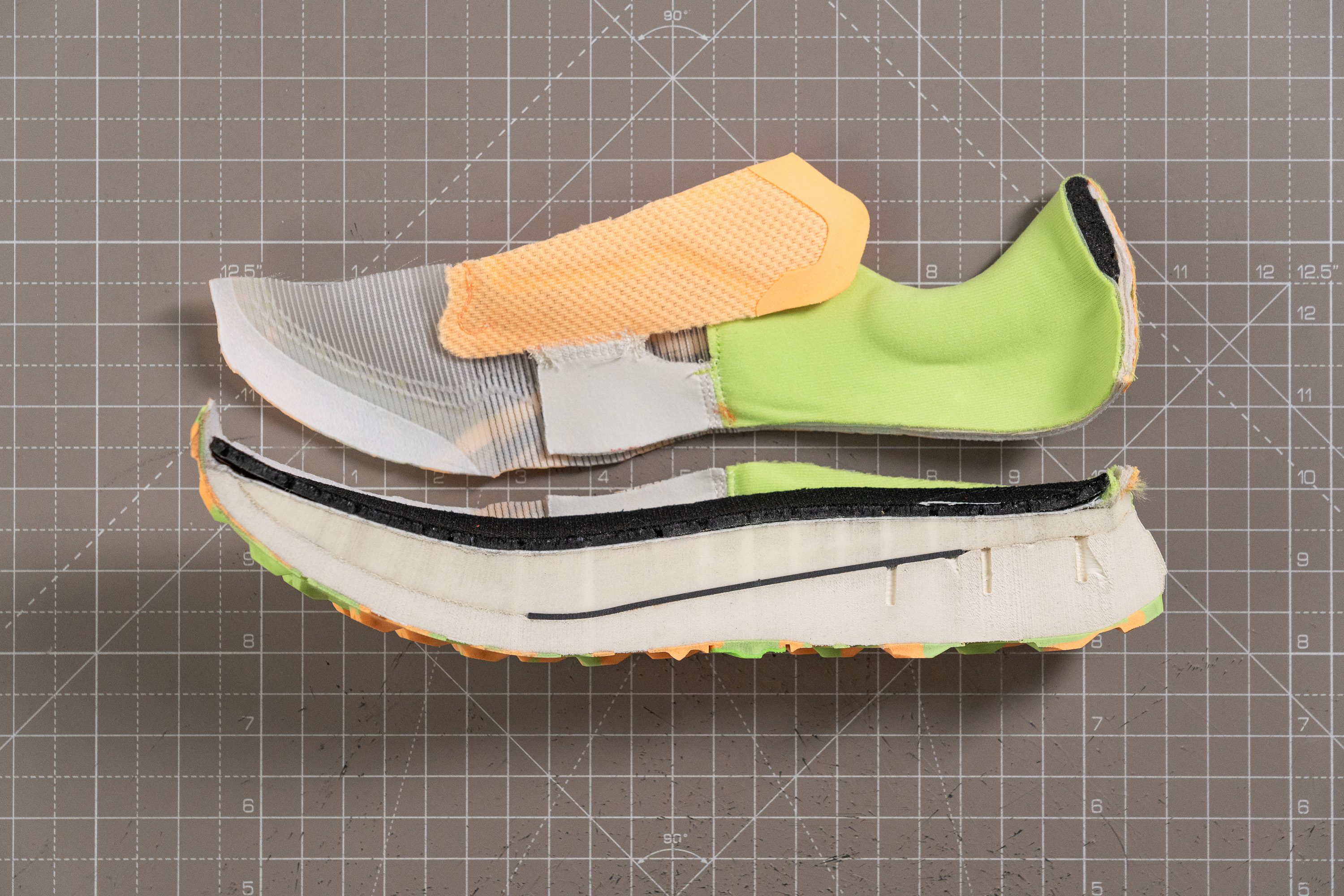
Tallaje y ajuste
Talla
Las ASICS Metafuji Trail tallan bien (13 votos).
Anchura / Ajuste
We tested the fit in our lab by replicating the shoe’s interior and measured a width of 94.0 mm.
This makes it slightly narrower than average at this point. However, it feels distinctly race-oriented on foot, so let’s take two more measurements to confirm.
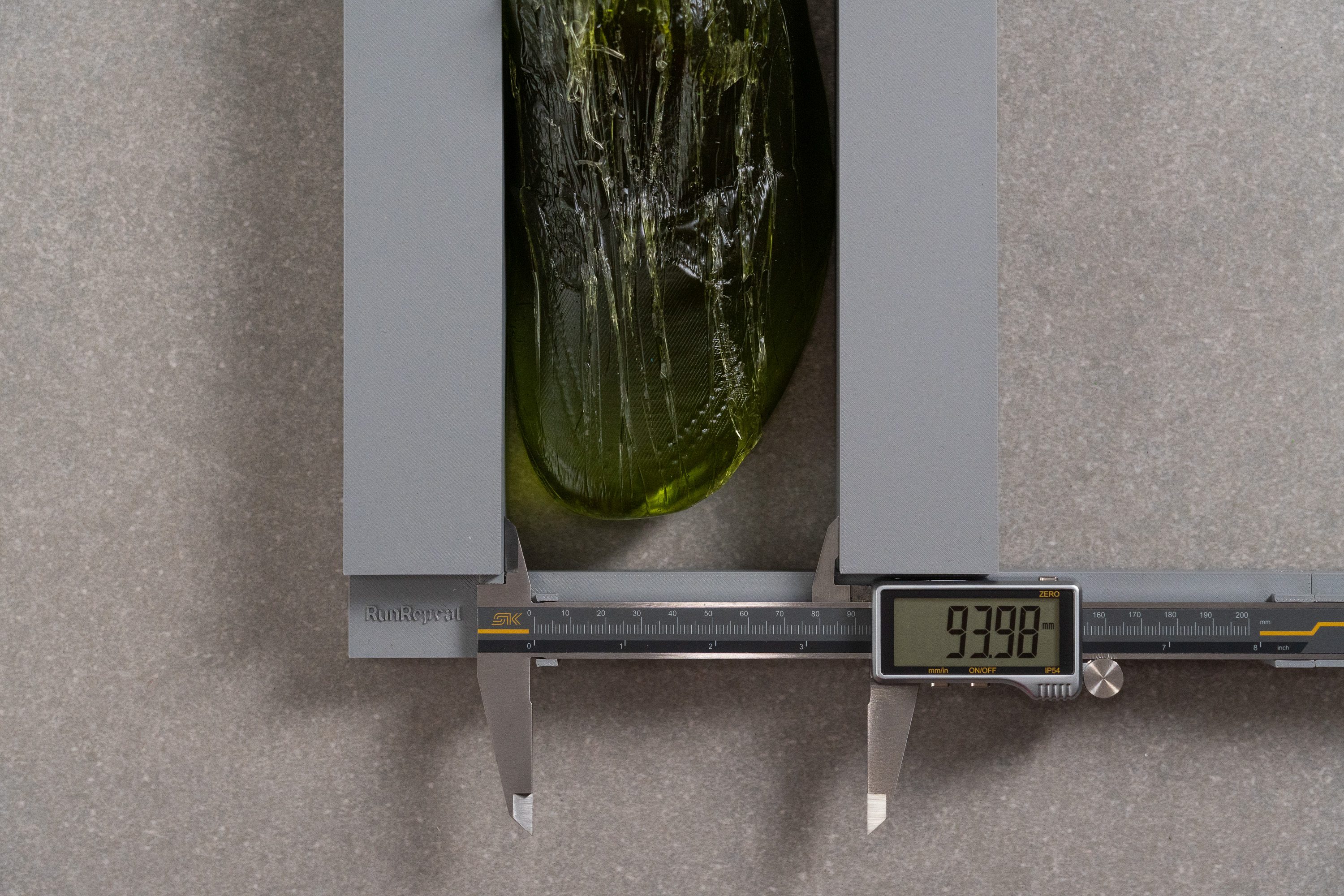
| Metafuji Trail | 94.0 mm |
| Media | 95.6 mm |
Anchura de la parte delantera
Now the data fully supports our initial impression. Our second measurement showed just 69.6 mm in the toebox, an extremely snug fit suited only for runners who don’t mind—or even prefer—a locked-in feel while running.
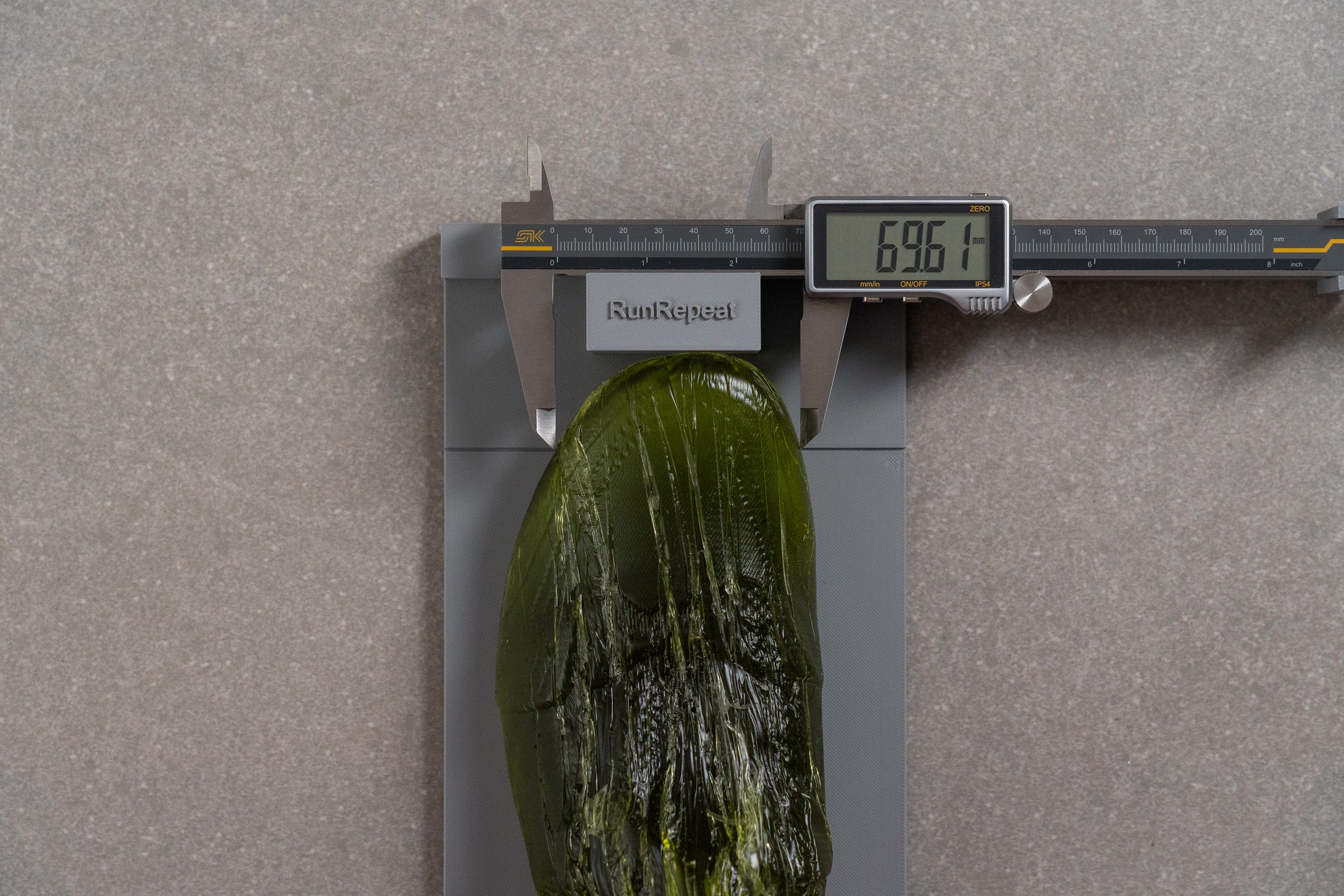
| Metafuji Trail | 69.6 mm |
| Media | 74.6 mm |
Altura de la parte delantera
The toebox height measurement further highlights the racing DNA of this shoe.
With only 24.5 mm of vertical space, it’s perfect for runners who enjoy a snug, performance-oriented fit but may feel restrictive for ultra-distance comfort.
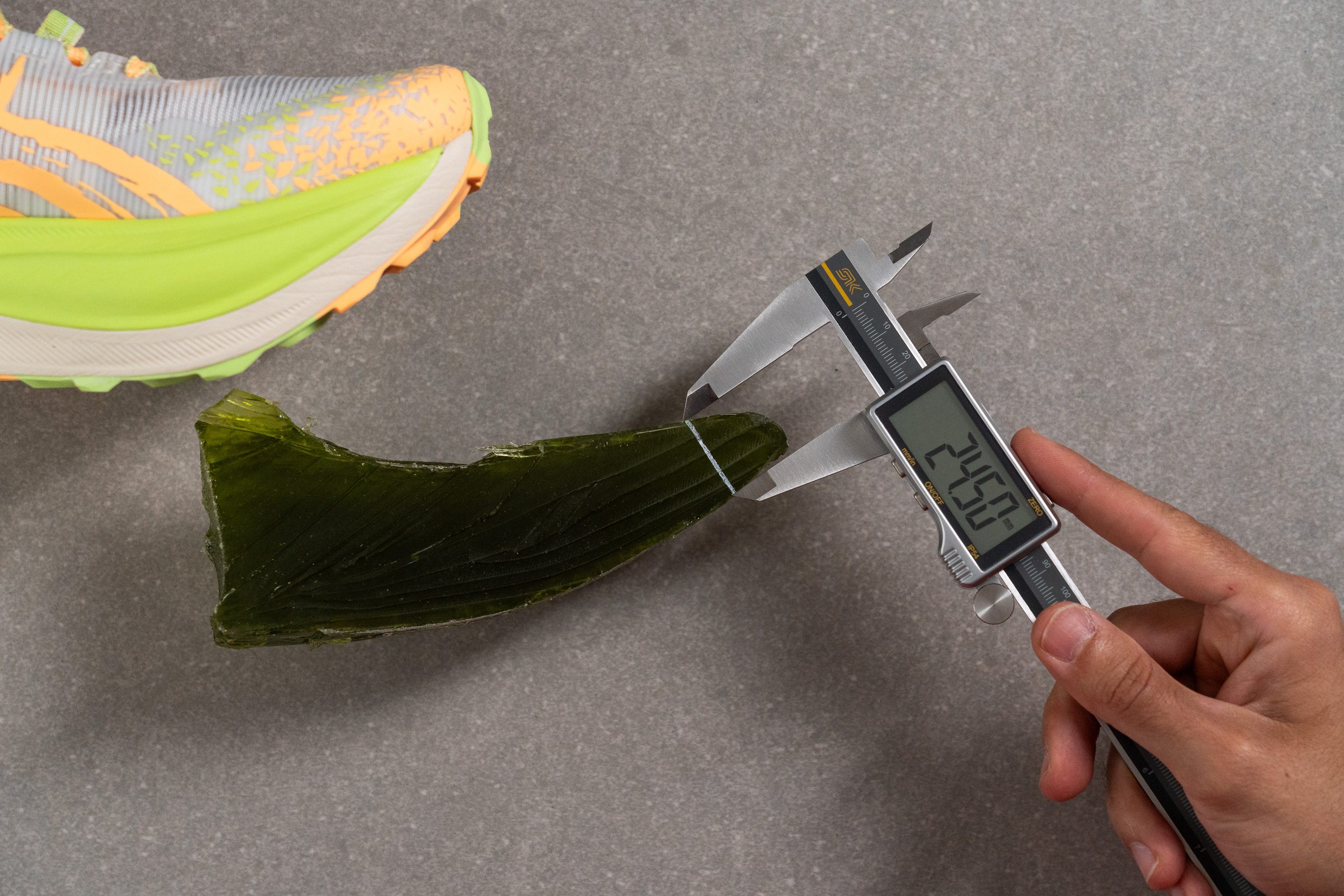
| Metafuji Trail | 24.5 mm |
| Media | 27.0 mm |
Tracción / Agarre
Tracción en el antepié
The ASICSGRIP rubber was an unexpected gem from ASICS, and it has worked very well in both road shoes like the Megablast and in trail models.
Staying true to its growing reputation, we tested it and discovered an outstanding 0.80 score that is truly impressive and makes this one of the strongest results we have seen in this test.
| Metafuji Trail | 0.80 |
| Media | 0.60 |
Profundidad del dibujo de la suela
We believe that the Metafuji Trail is only suited for runnable trails, gravel, or easy terrain.
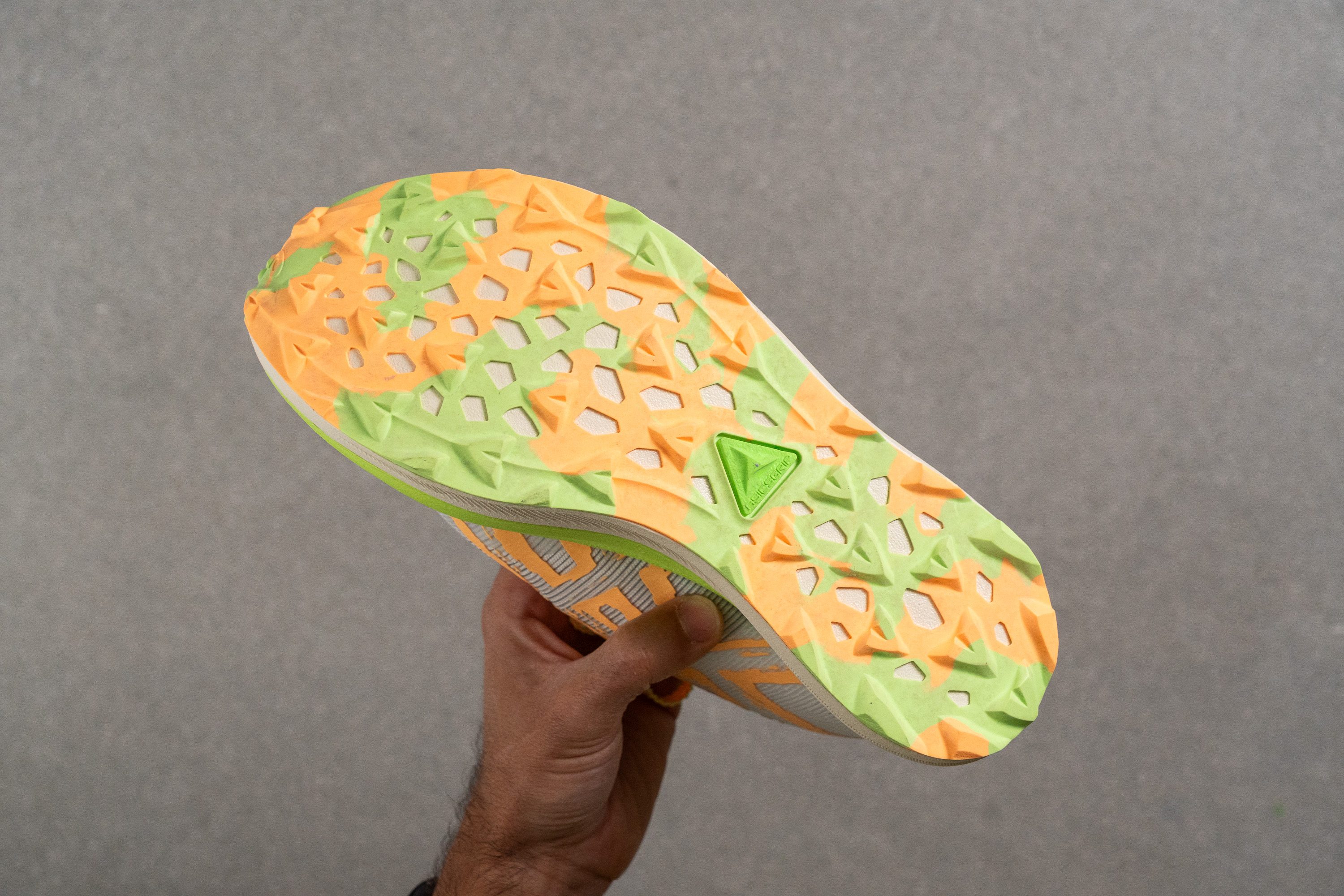
In technical, root-filled, or muddy sectors it may not perform well due to its shallow 2.7-mm lugs.
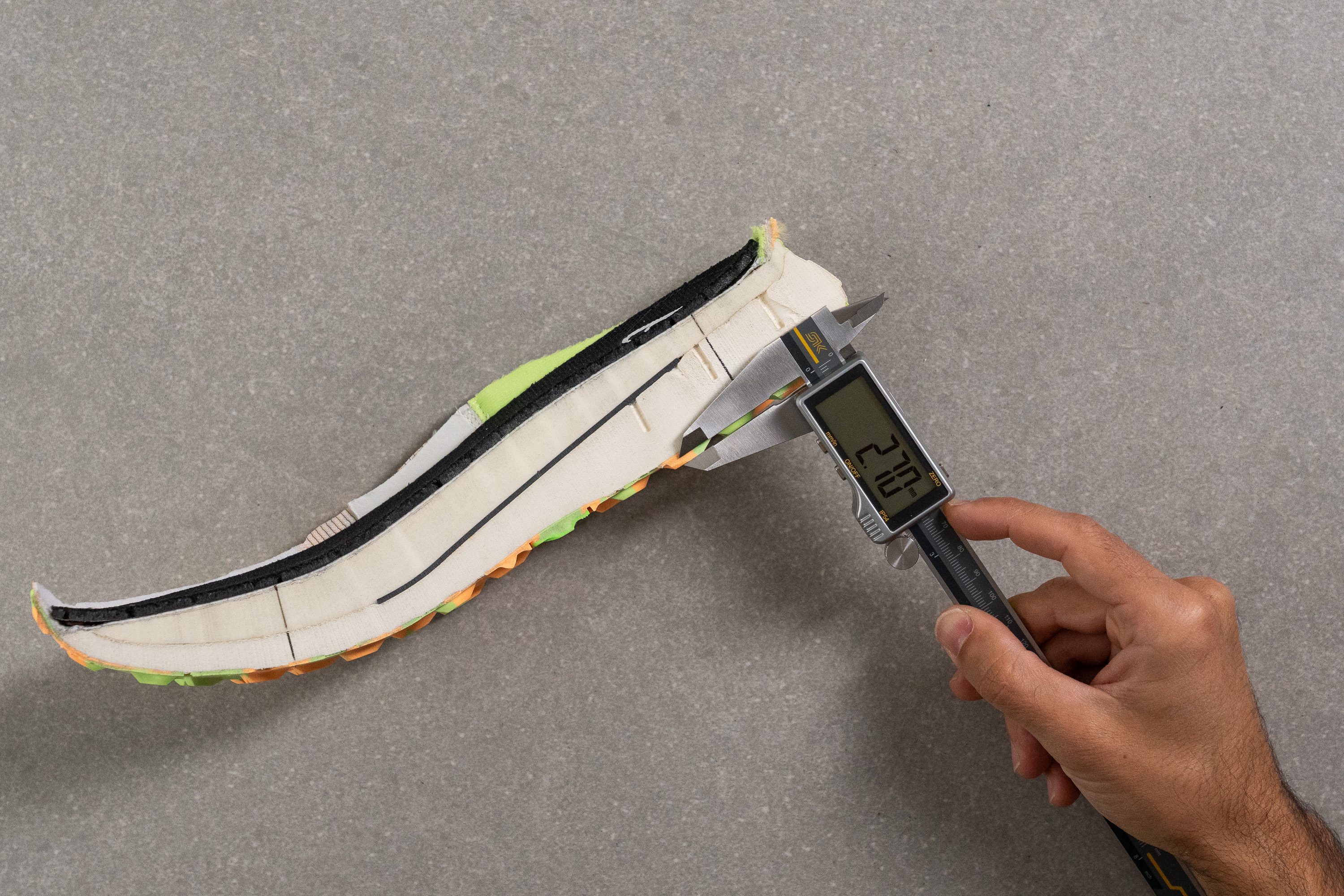
| Metafuji Trail | 2.7 mm |
| Media | 3.5 mm |
Diseño de la suela exterior
The outsole of the Metafuji Trail features orange and green ASICSGRIP rubber arranged in triangular and arrow-like shapes. Rubber coverage extends across most of the shoe, with small cutouts revealing exposed FF Blast+ foam between the segments.
For us, the outsole is one of this shoe’s standout features, delivering impressive grip and full rubber coverage.
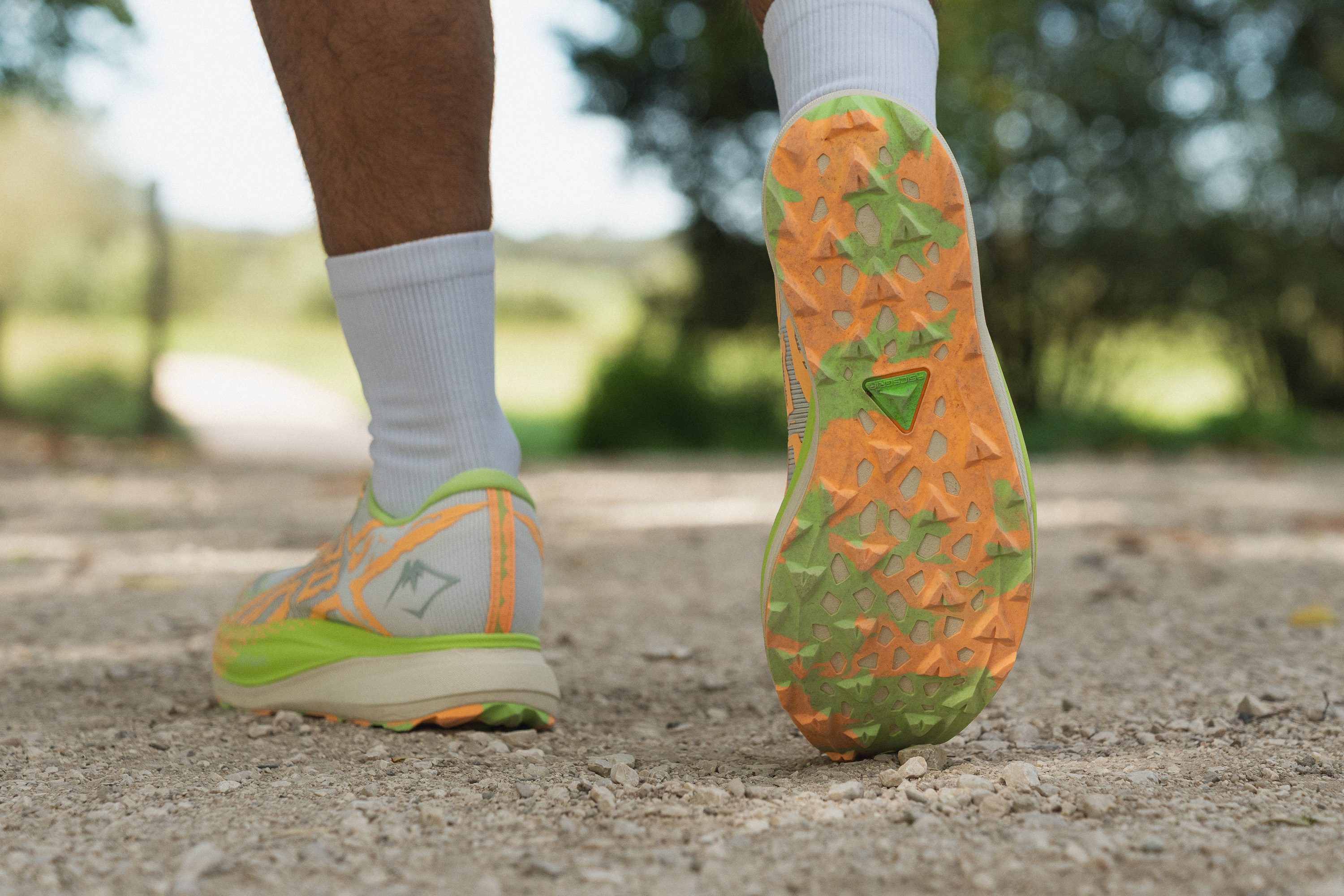
Flexibilidad / Rigidez
While the forked carbon plate adds a touch of flexibility during cornering, the longitudinal stiffness stays unchanged. Our 30-degree bend test confirmed this with a strong 25.2N result, making it unsuitable for those seeking a more flexible underfoot feel.
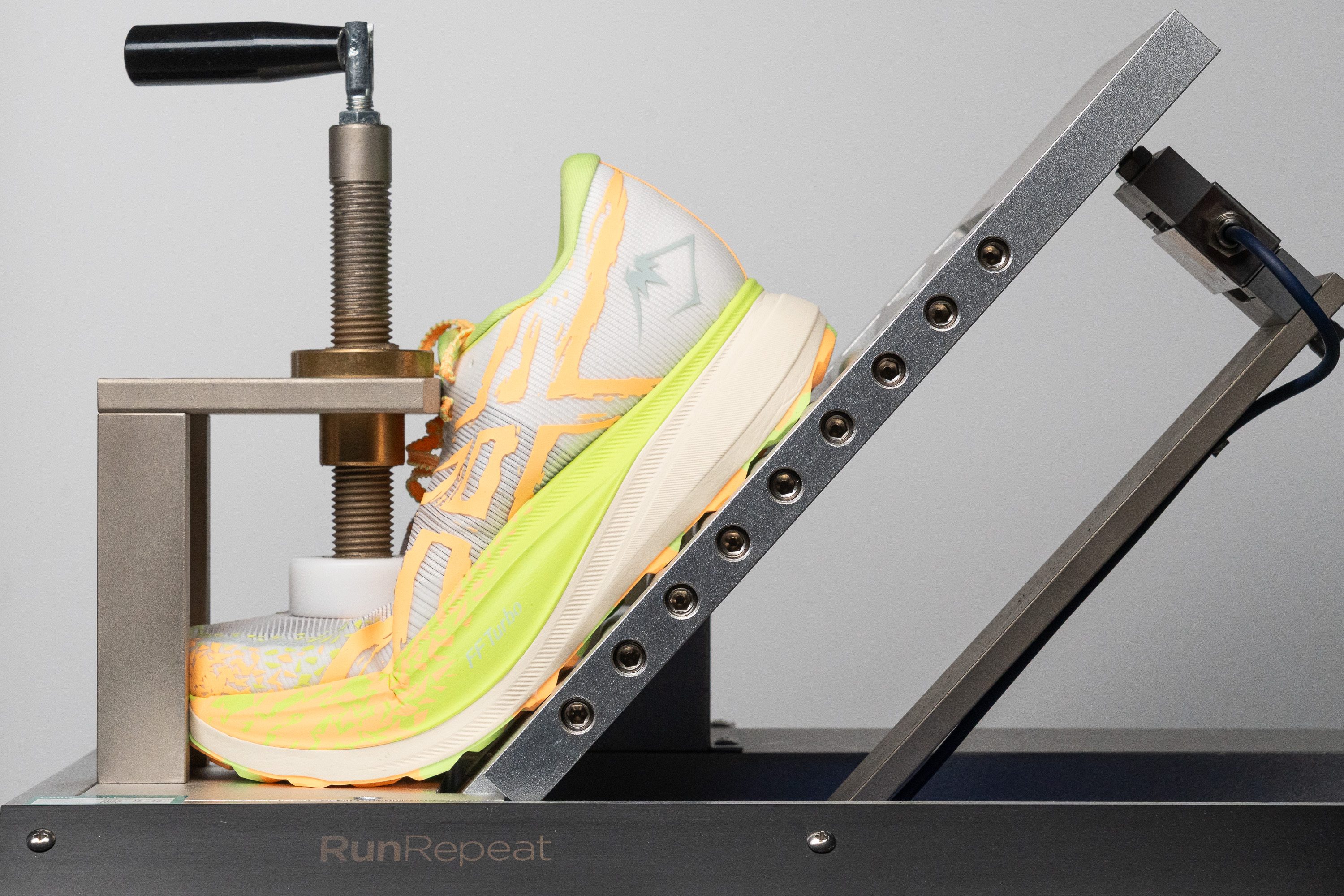
| Metafuji Trail | 25.2N |
| Media | 14.6N |
Peso
We believe that one of the most impressive aspects of the Metafuji Trail is its feather-light feel. At just 9.10 oz or 258g, it delivers a remarkably agile and speedy ride that feels effortlessly quick underfoot.
Achieving this weight required countless micro-level tweaks due to its tall, cushion-packed stack height. And in our opinion, this shoe is one of the best trail options for runners seeking a blend of high cushioning and low weight.
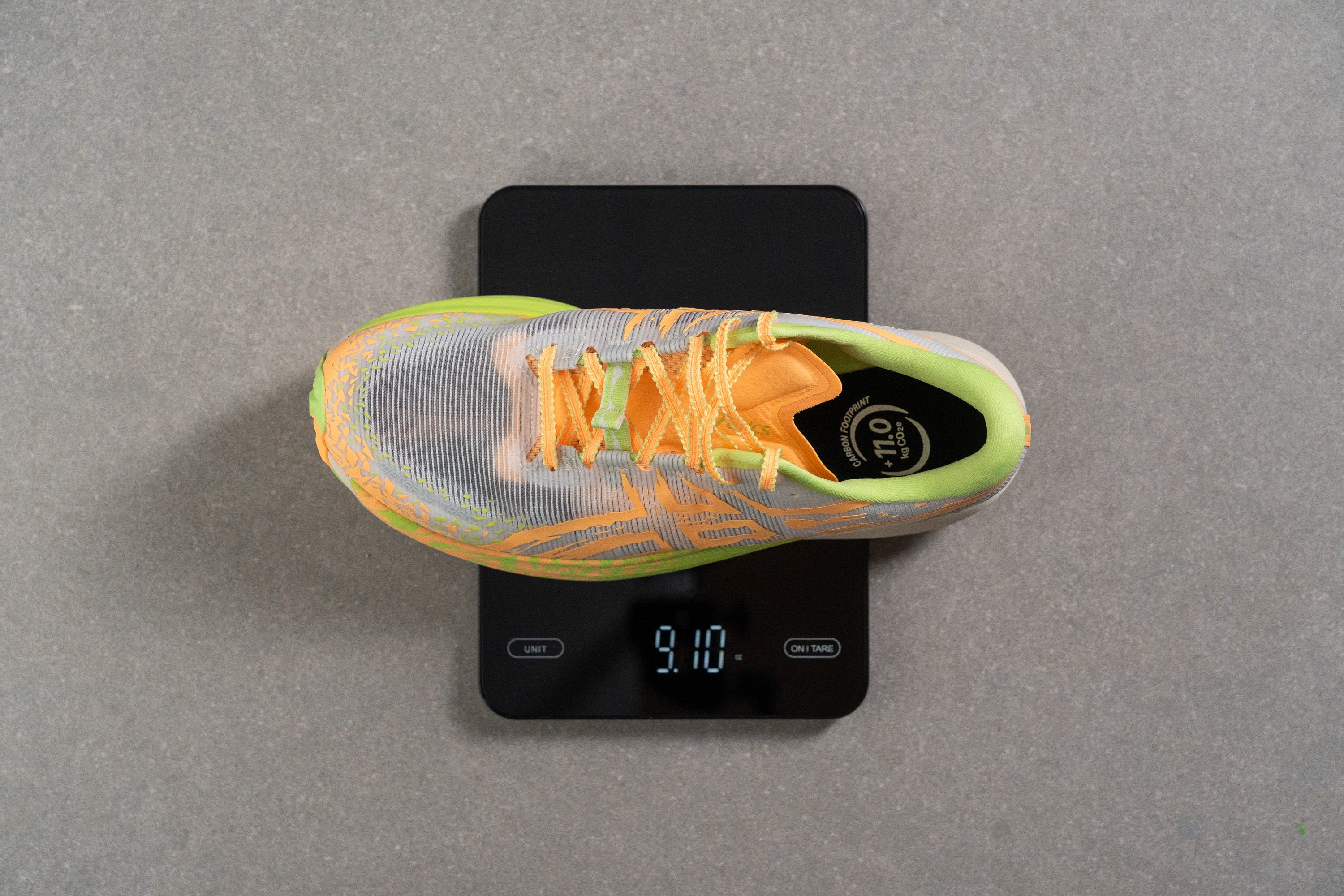
| Metafuji Trail | 9.1 oz (258g) |
| Media | 10.2 oz (289g) |
Transpirabilidad
When a brand asks runners to pay such a high price for a shoe, it should deliver top-tier technology—and ASICS certainly did with the upper. The Metafuji Trail features a modified version of the Metaspeed series upper, called MOTIONWRAP TR, that uses a ultra-lightweight Nexkin material.
Thanks to its stripped-down design, we found it excels in ventilation, earning a perfect 5/5 score. This makes the Metafuji Trail an excellent choice for summer ultra races where overheating can be a real issue.
Compared to road versions, the main difference lies in the midfoot area, which is more structured here to enhance stability, and that’s a much-needed improvement.
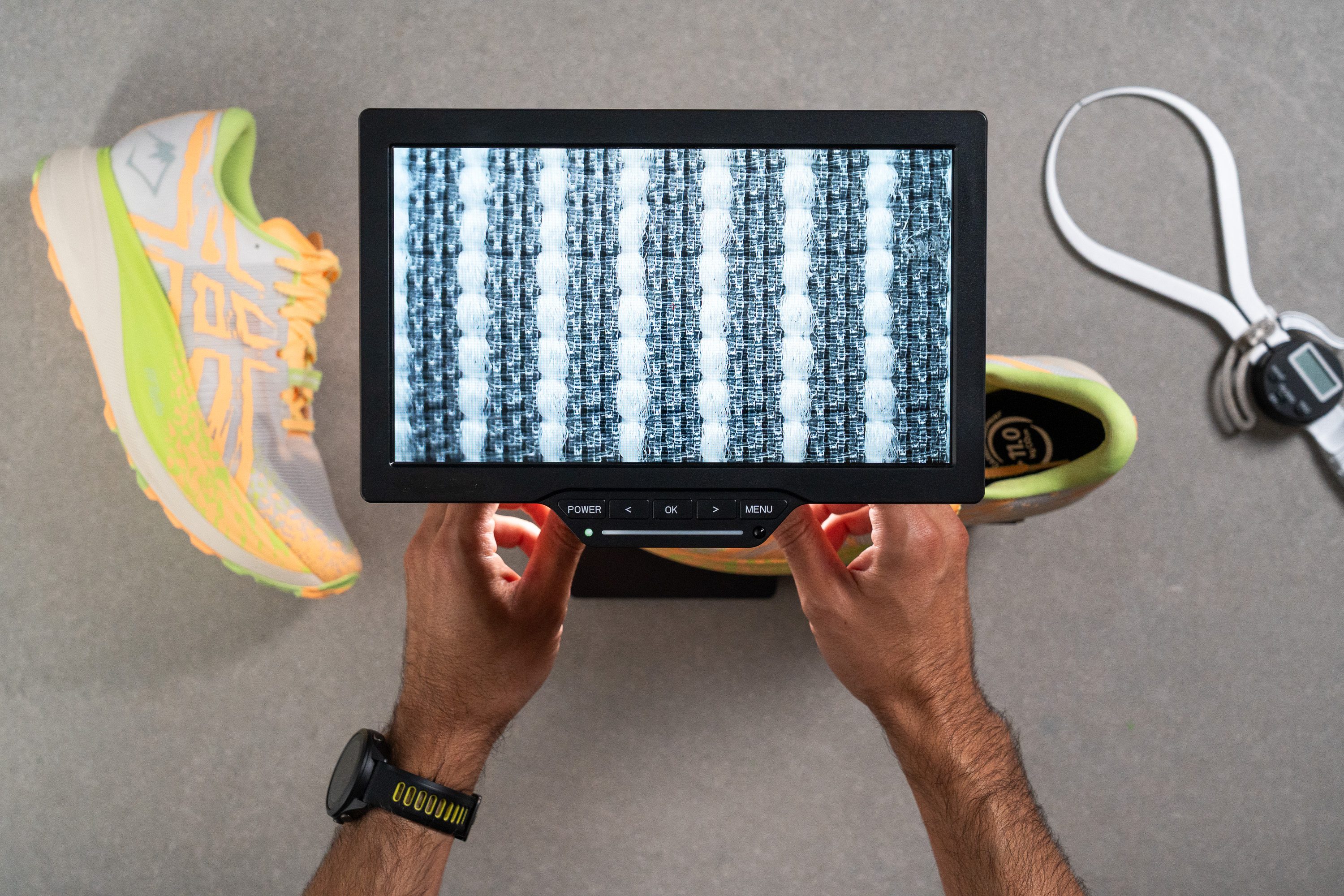
Under the microscope, the upper looks beautiful but also delicate, so testing its durability with the Dremel is essential since trails are far harsher than roads. We'll do that!
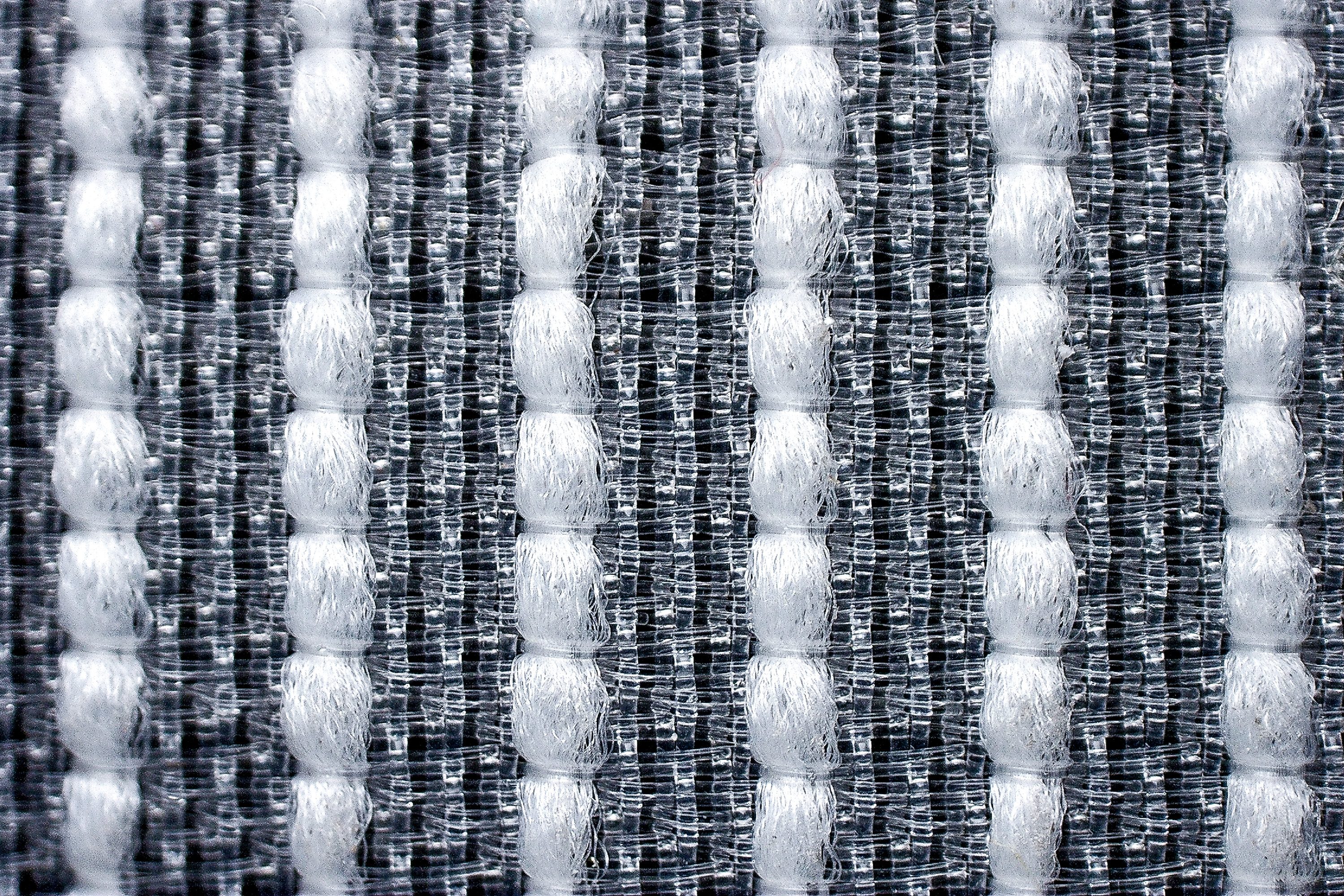
Overall, we’re quite satisfied with the upper. Ventilation is outstanding, comfort is better than expected, and the build quality matches the premium price... unlike the midsole.
| Metafuji Trail | 5 |
| Media | 3.2 |
Estabilidad
Prueba de estabilidad lateral
The Metafuji Trail offers minimal stability and isn’t built for those who need extra support. Its towering midsole, narrow base in both heel and forefoot, and absence of stabilizing features like sidewalls make it suitable only for neutral runners with strong form on non-technical terrain.
Rigidez torsional
The main way ASICS stabilized the ride was by adding an ultra-stiff carbon plate, which earned a 5/5 in our torsional rigidity test.
This makes the ride slightly harsh but significantly improves control. Without it, we really believe that the shoe would feel extremely unstable and nearly unmanageable.
| Metafuji Trail | 5 |
| Media | 3.6 |
Rigidez del contrafuerte del talón
The heel counter is slightly more structured than in the Metaspeed series, earning a 3/5 in our manual test. This added support makes sense for a trail shoe, providing better rearfoot control and making it more suitable for heel strikers.
| Metafuji Trail | 3 |
| Media | 3 |
Anchura de la mediasuela - antepié
The Metafuji Trail feels compact right out of the box, and we could sense it the moment we held it.
Sure thing, this design is amplified by its sky-high stack height, yet we still noticed its narrow shape rightaway. And when we tested it in the lab, our calipers showed a 109.1 mm forefoot width—below average and confirming our first impression.
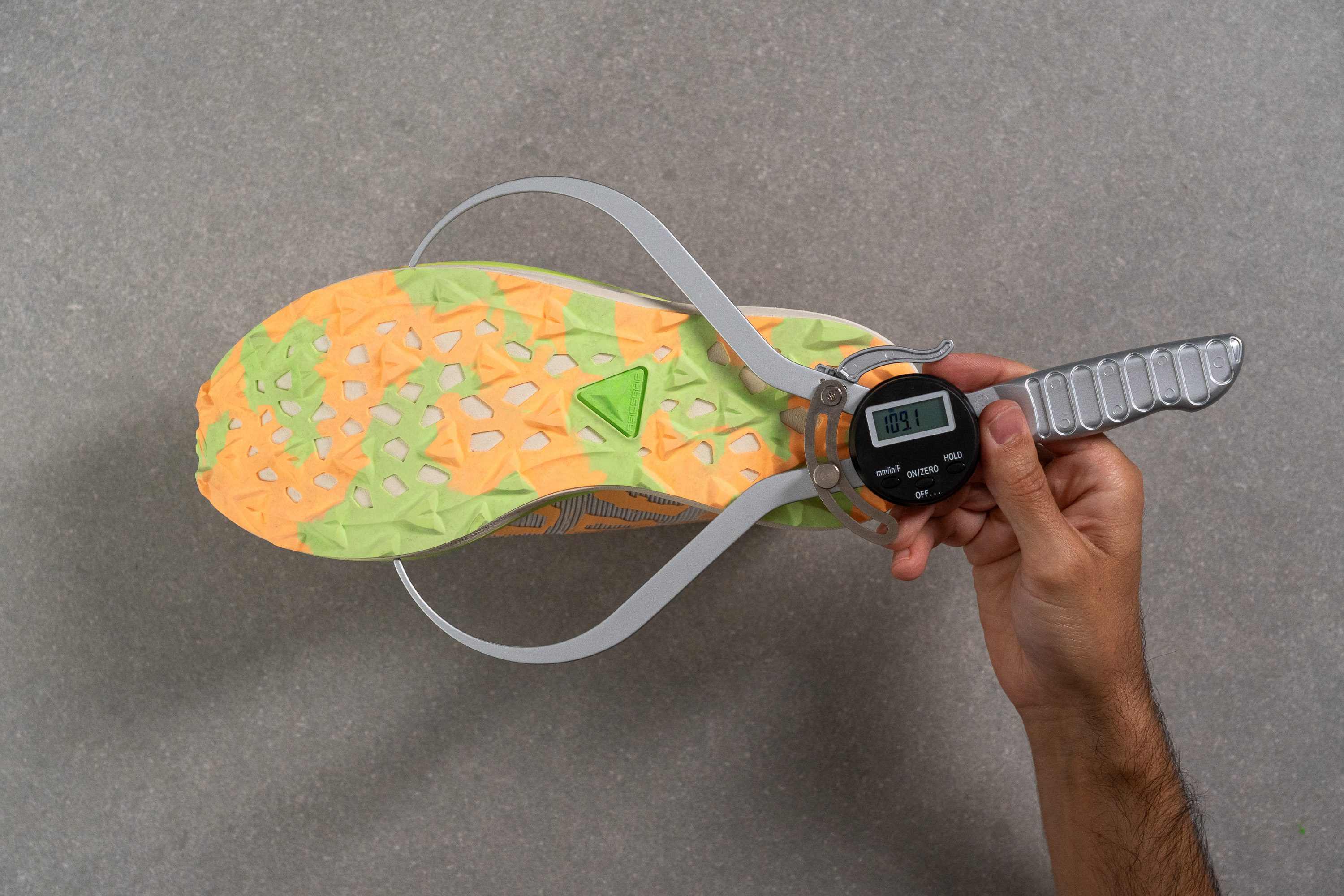
| Metafuji Trail | 109.1 mm |
| Media | 112.8 mm |
Anchura de la mediasuela - talón
With just 81.6 mm in the heel, the Metafuji Trail is definitely not for those concerned about stability. You need to be absolutely confident in your balance, as it’s even narrower than many road super shoes.
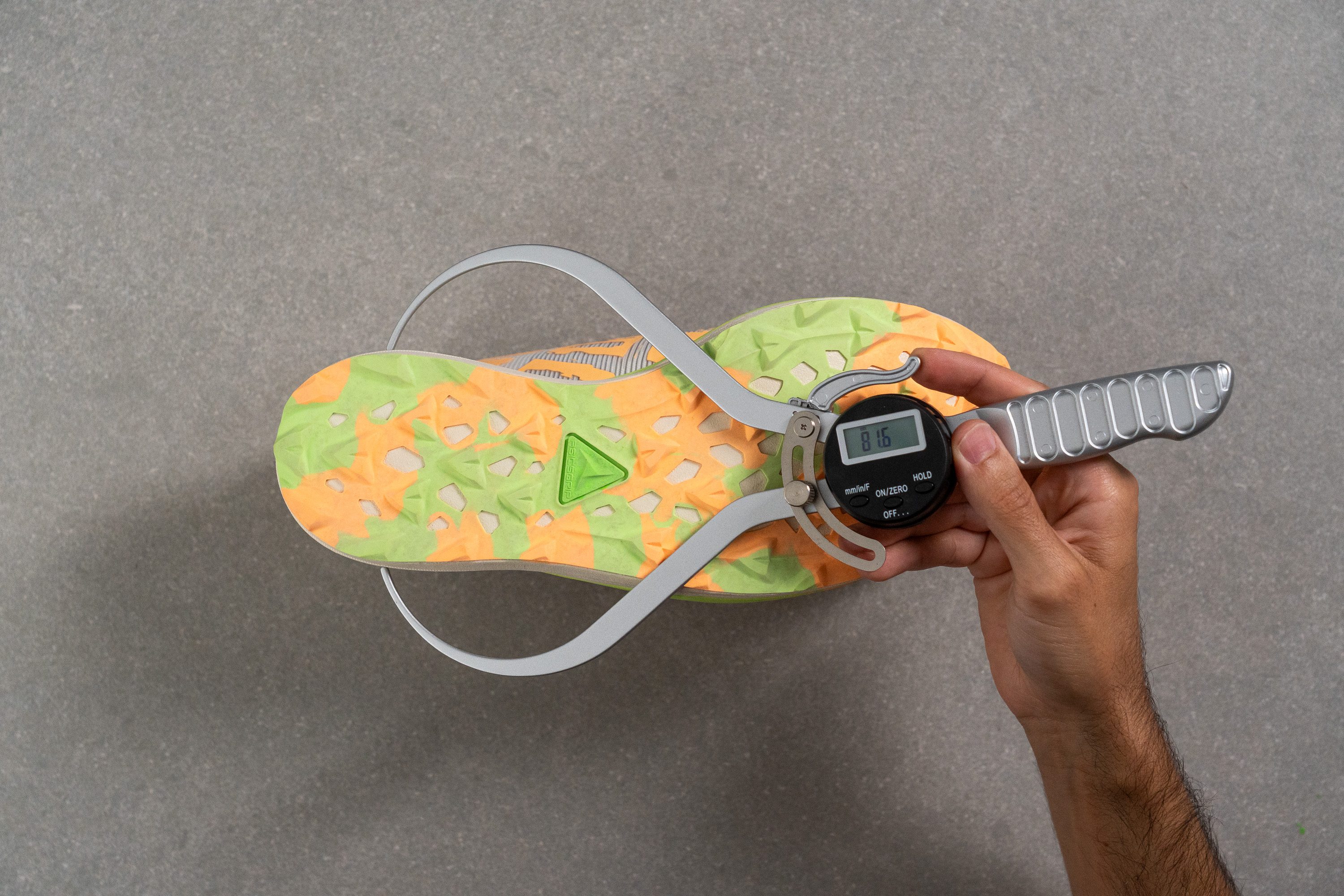
| Metafuji Trail | 81.6 mm |
| Media | 89.8 mm |
Durabilidad
Durabilidad de la parte delantera
The trade-off for the Metafuji Trail’s ultra-light and airy MOTIONWRAP TR upper is durability. We discovered that it offers almost no resistance to abrasion, earning our lowest possible score: 1 out of 5.
| Metafuji Trail | 1 |
| Media | 3.1 |
Durabilidad del acolchado del talón
The heel of the Metafuji Trail is surprisingly well-cushioned for a racing shoe, and we found that it completes the package by also being impressively durable, earning a solid 4/5 in our tests.
| Metafuji Trail | 4 |
| Media | 3 |
Durabilidad de la suela
The ASICSGRIP outsole delivers outstanding traction, but it sacrifices a bit of durability compared to its rivals. After our Dremel test, we measured 1.2 mm of wear.
It's nothing alarming, but worth noting for runners who wear out outsoles quickly.
| Metafuji Trail | 1.2 mm |
| Media | 0.9 mm |
Grosor de la suela
The outsole thickness is very low at just 1.1 mm, which doesn’t surprise us in the lab given the shoe’s lightweight construction and race-focused design. It’s the perfect choice for the Metafuji Trail.
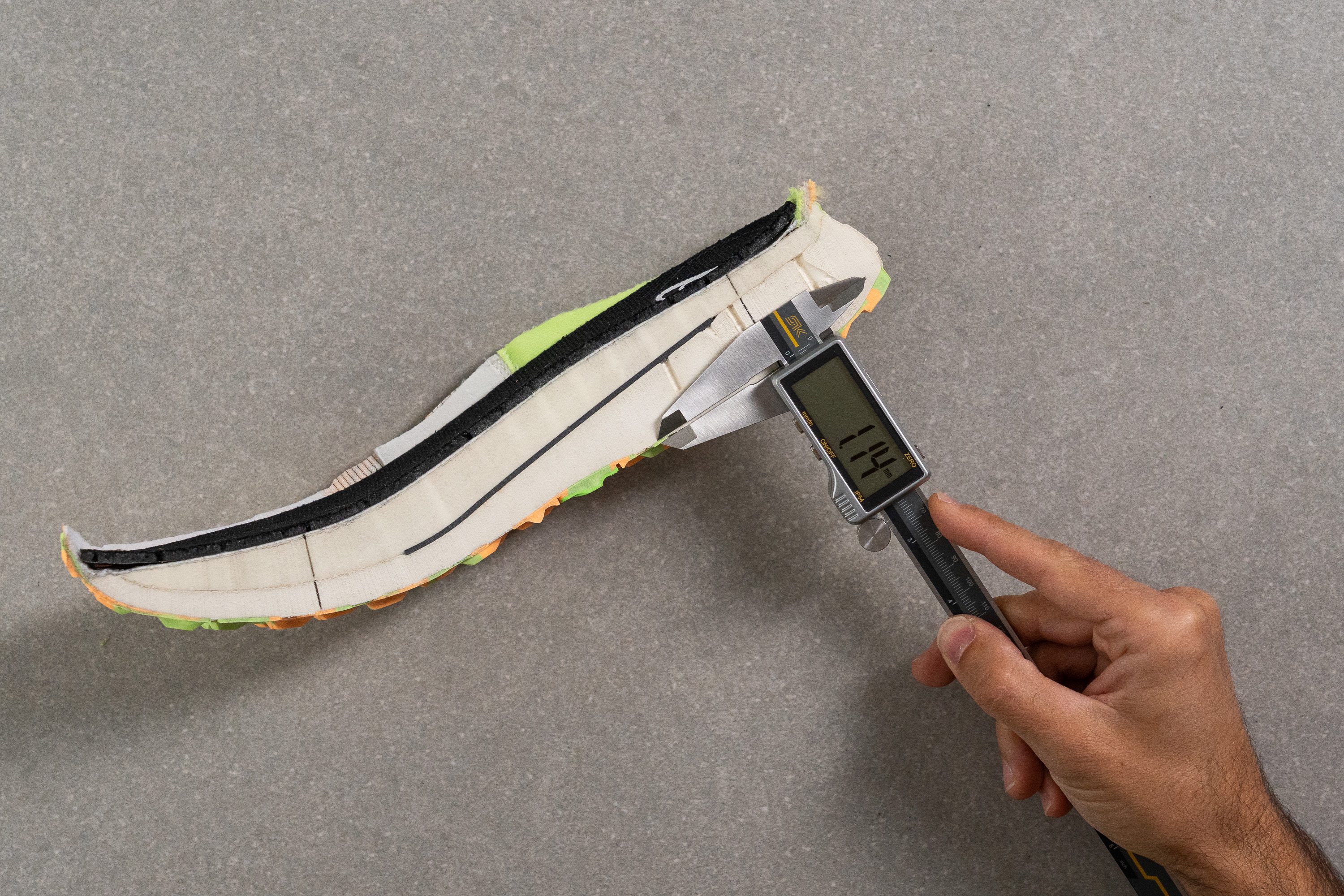
| Metafuji Trail | 1.1 mm |
| Media | 2.2 mm |
Varios
Grosor de la plantilla
At only 2.7 mm, the insole is one of the thinnest we’ve ever measured in our lab for a trail shoe.
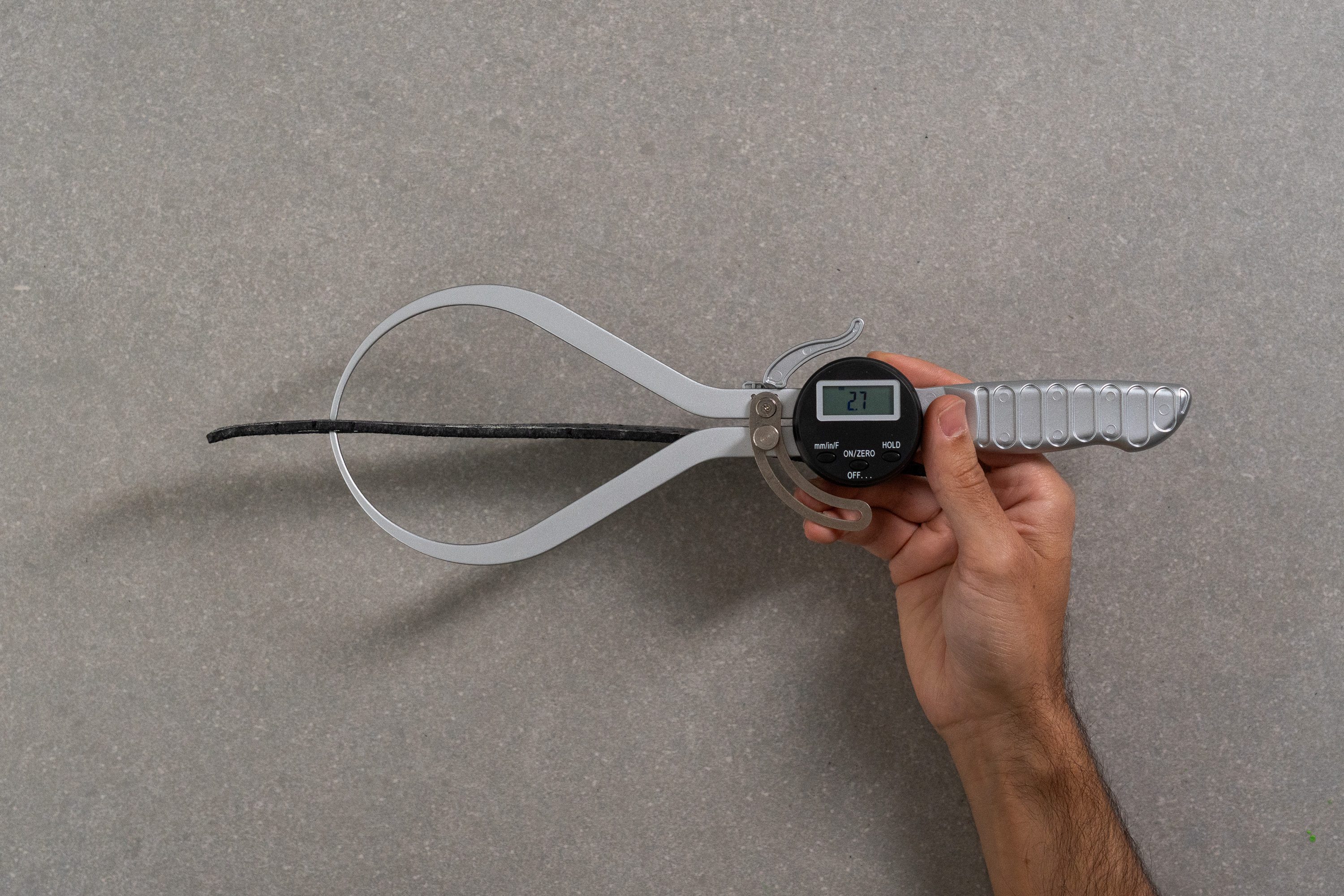
| Metafuji Trail | 2.7 mm |
| Media | 4.7 mm |
Plantilla extraíble
Paying a premium for this shoe at least brings some high-end perks, including an ultra-light, perforated insole. While it’s removable, we don’t recommend swapping it out, as most replacements are likely to be thicker and heavier.
| Metafuji Trail | Sí |
Rigidez de la mediasuela en frío (%)
The Metafuji Trail hardens more than we’d like in cold conditions. In our freezer test, it became 36% firmer after just 20 minutes.
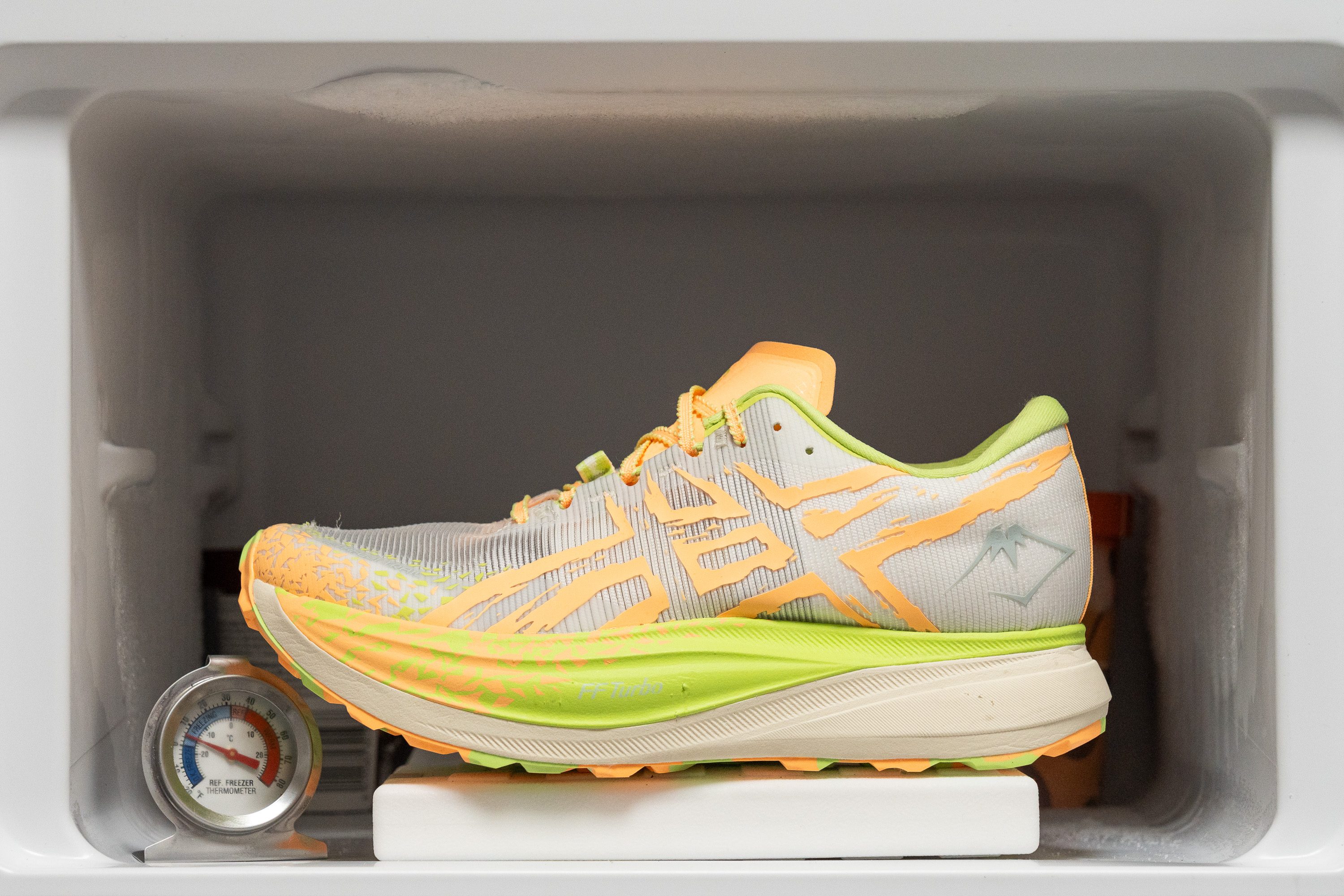
| Metafuji Trail | 36% |
| Media | 26% |
Elementos reflectantes
Unfortunately, ASICS chose to omit reflective elements, which is disappointing given that this shoe is likely to be used in long ultra events that extend into the night or start before sunrise.
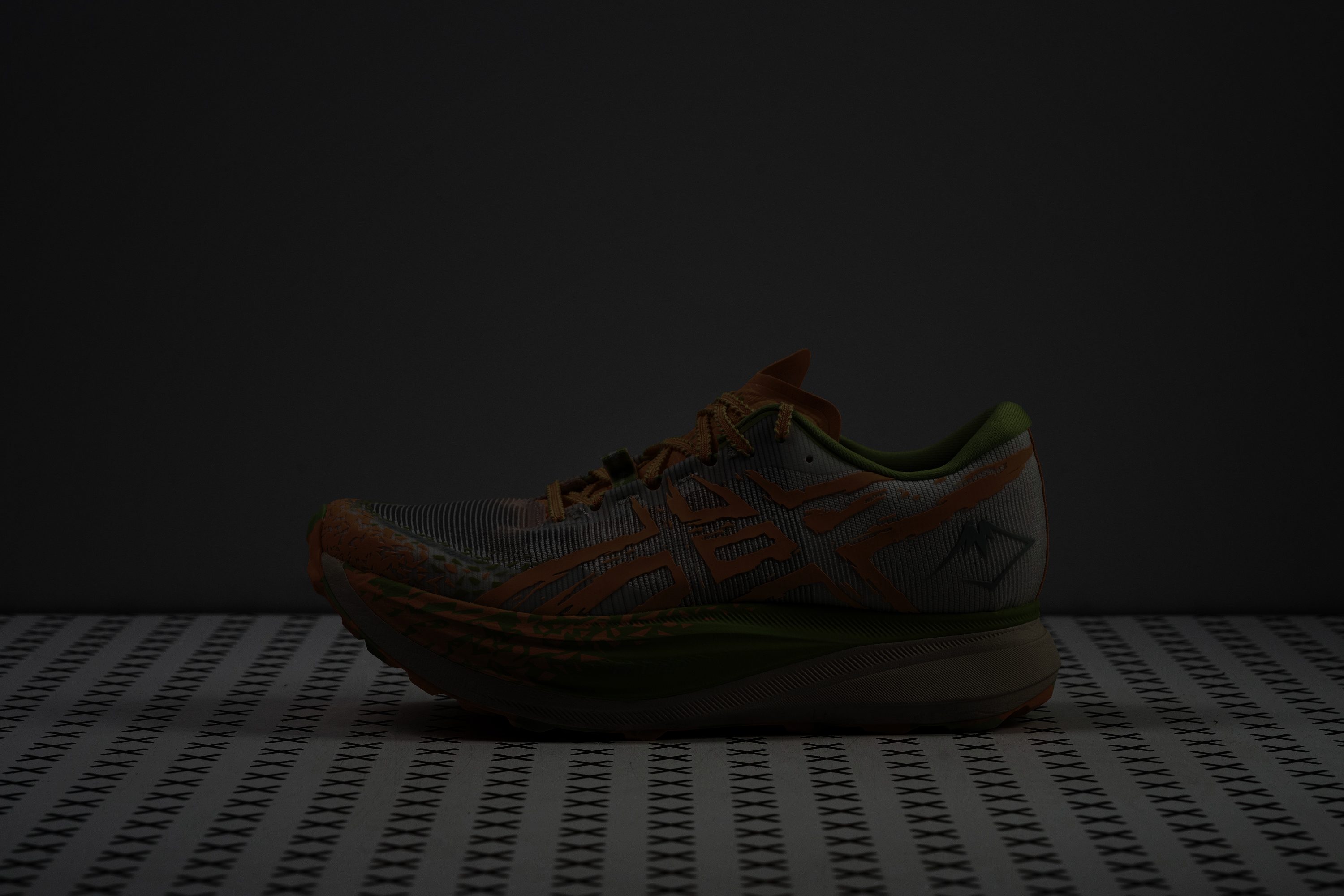
| Metafuji Trail | No |
Acolchado de la lengüeta
The Metafuji Trail features premium, textured laces that stay firmly in place, as expected from its high price tag. We found the lacing system effective, combining punched and webbed eyelets with a elastic strap that keeps the laces secure and prevents unwanted movement.
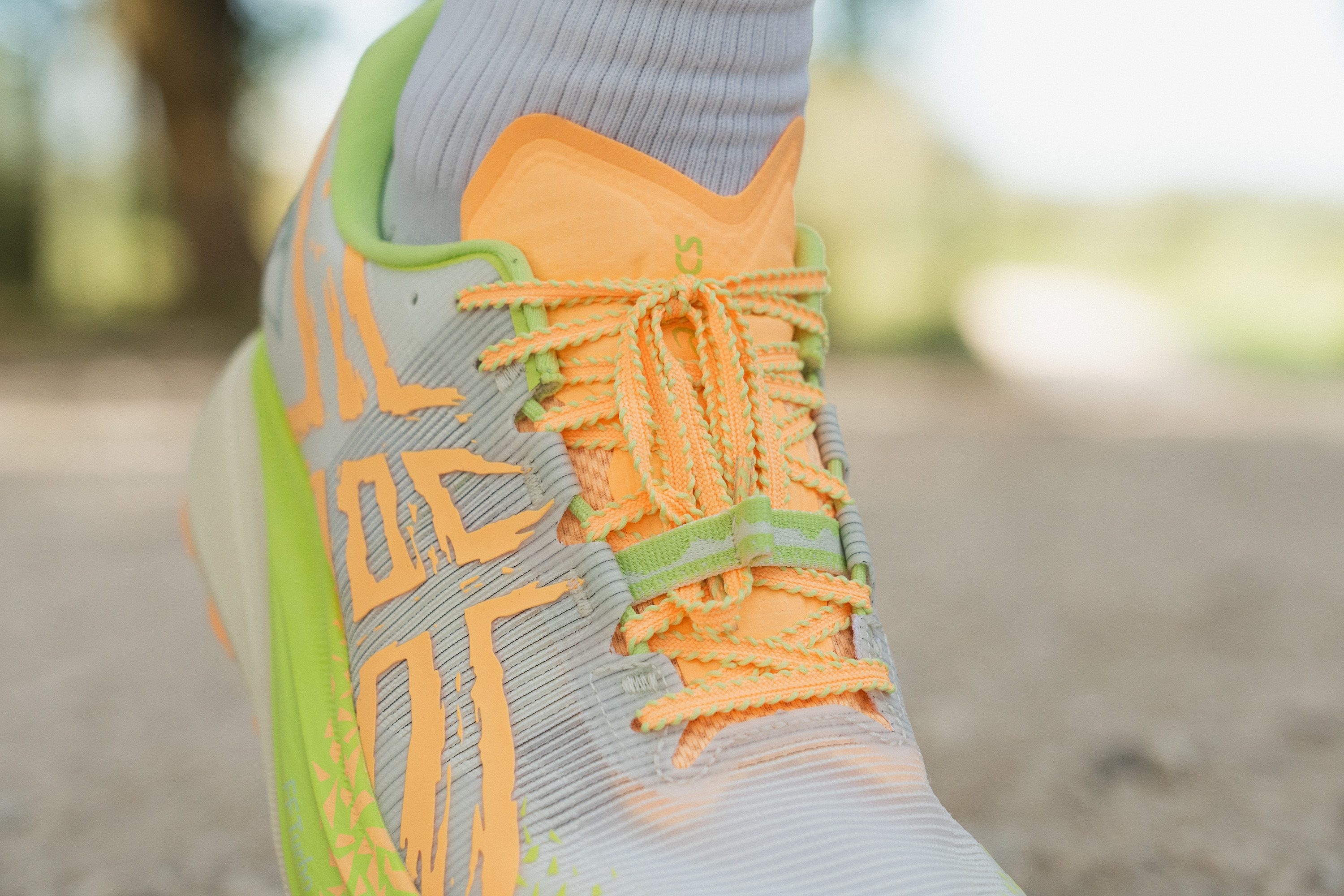
While ASICS’ supershoes like the Metaspeed Ray usually feature ultra-thin tongues under 1 mm, the Metafuji Trail takes a more forgiving, well-balanced approach. Its 4.0 mm tongue remains lightweight yet provides noticeably better protection for the instep during long mountain efforts. And it’s even more padded just a bit lower down.
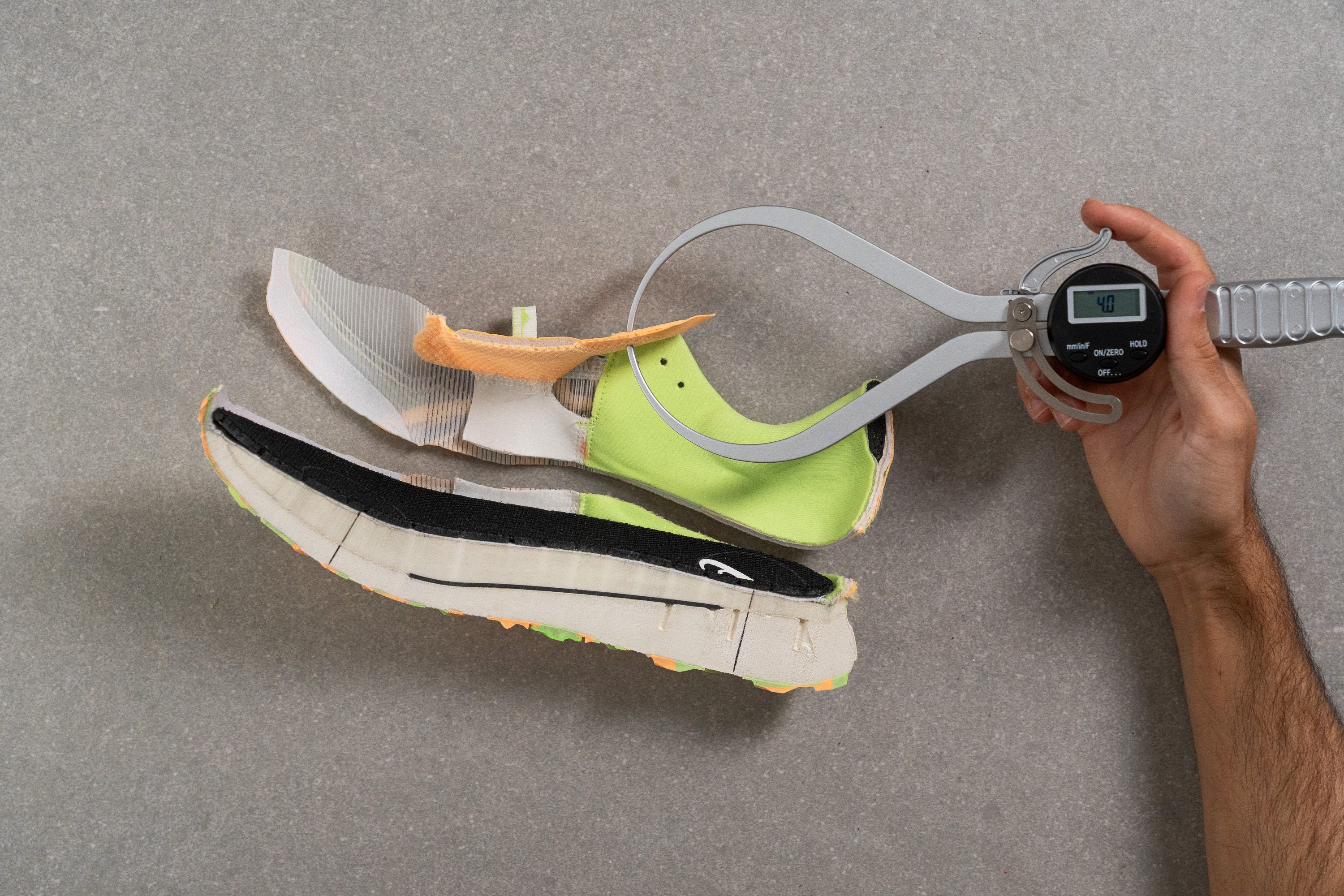
| Metafuji Trail | 4.0 mm |
| Media | 6.4 mm |
Lengüeta: tipo de refuerzo
Trail shoes in this price range typically feature fully gusseted tongues. However, ASICS prioritized lightness and speed here, opting for a semi-gusseted design that reduces weight but may allow small debris to enter.
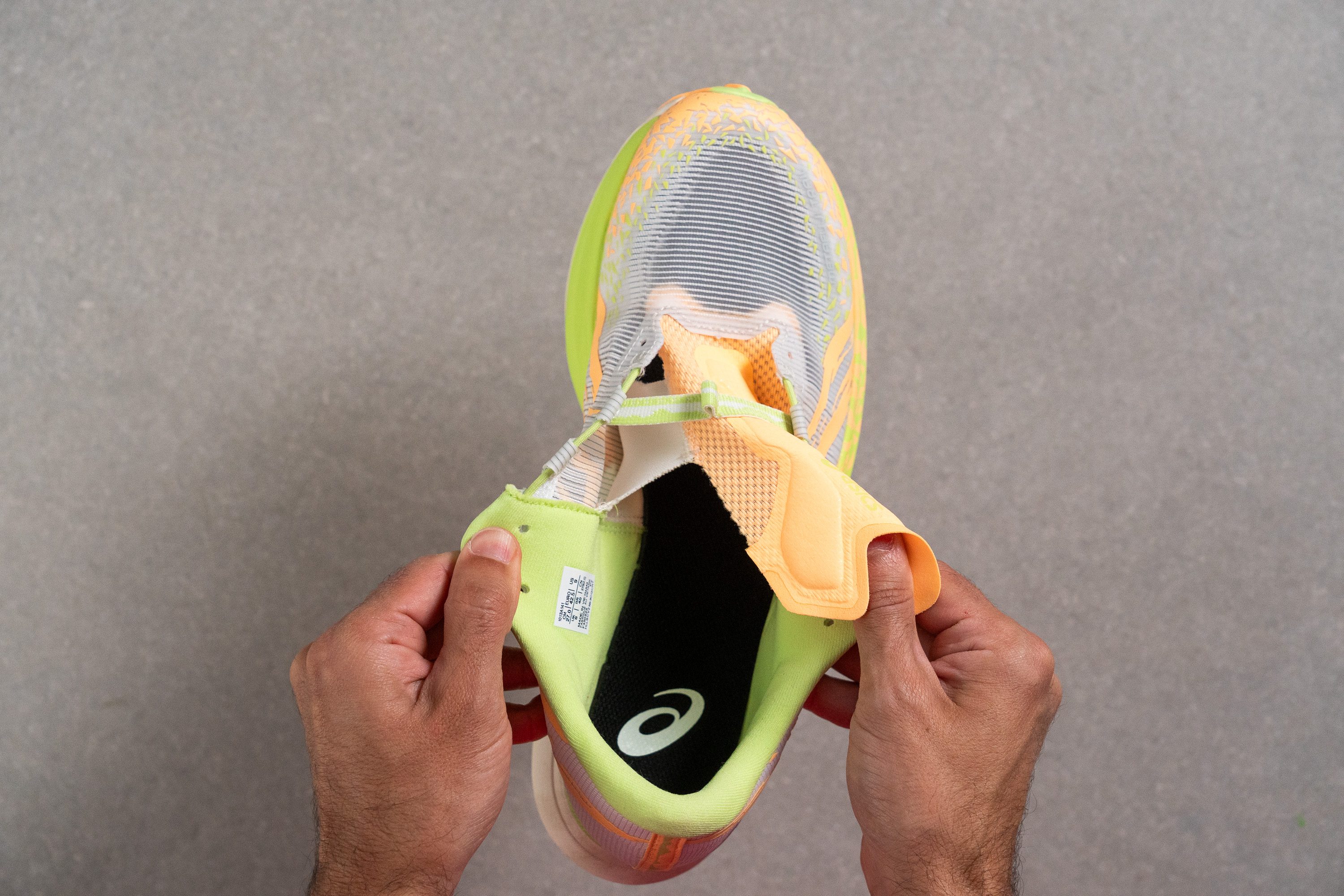
| Metafuji Trail | Ambos lados (semi) |
Precio
This is among the most expensive trail running shoes on the market, and we believe it’s best suited for racers seeking a superfoam-equipped trail model. Even so, the generous amount of FF Blast+ in its midsole, in our opinion, renders it less interesting from a value perspective compared to some of its competitors.
| Metafuji Trail | $250 |
Tirador del talón
The heel of the Metafuji Trail lacks a pull tab and closely resembles its road siblings like the Metaspeed Sky Tokyo, bearing little resemblance to trail-oriented shoes like the Trabuco Max 4.
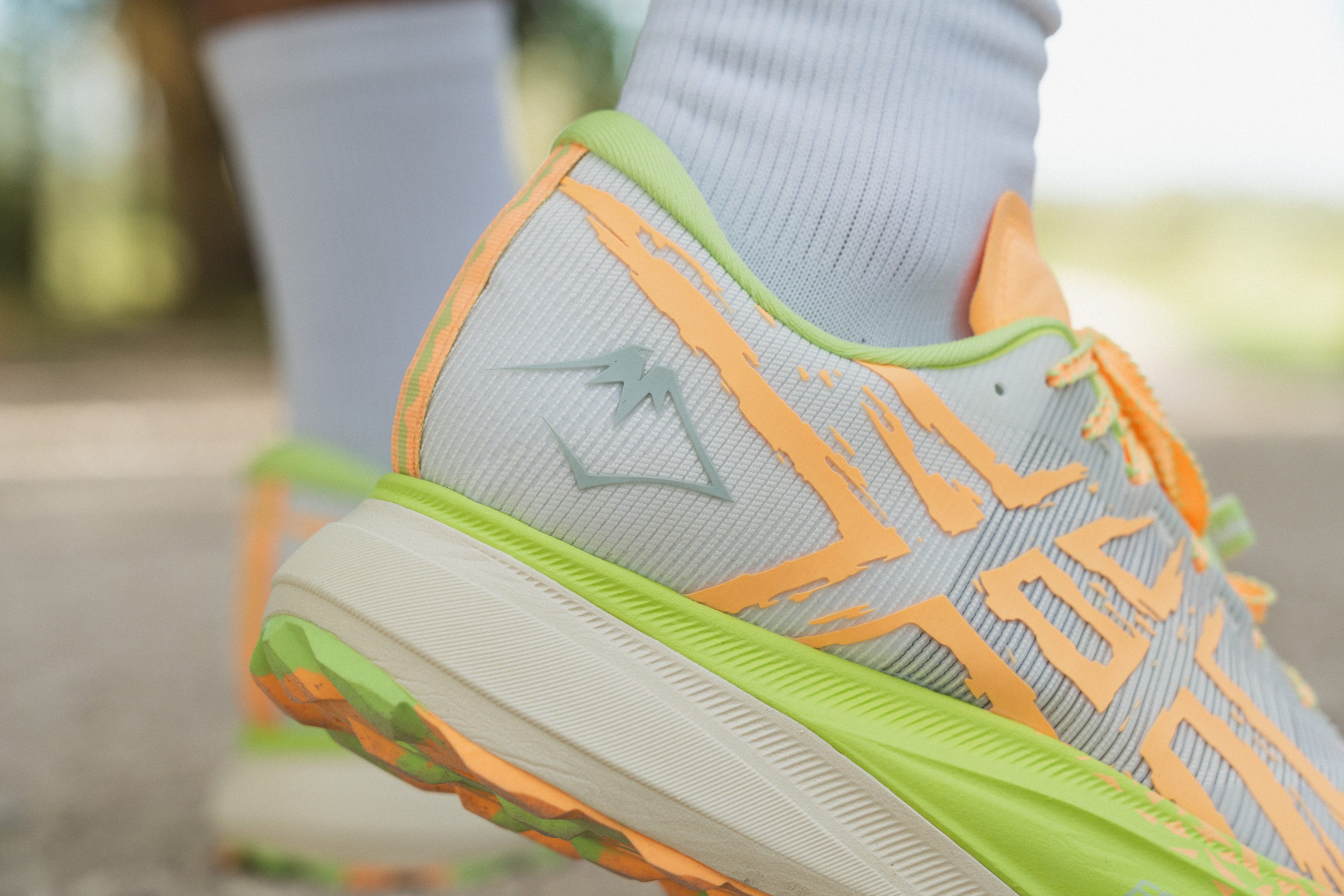
| Metafuji Trail | Ninguno |

